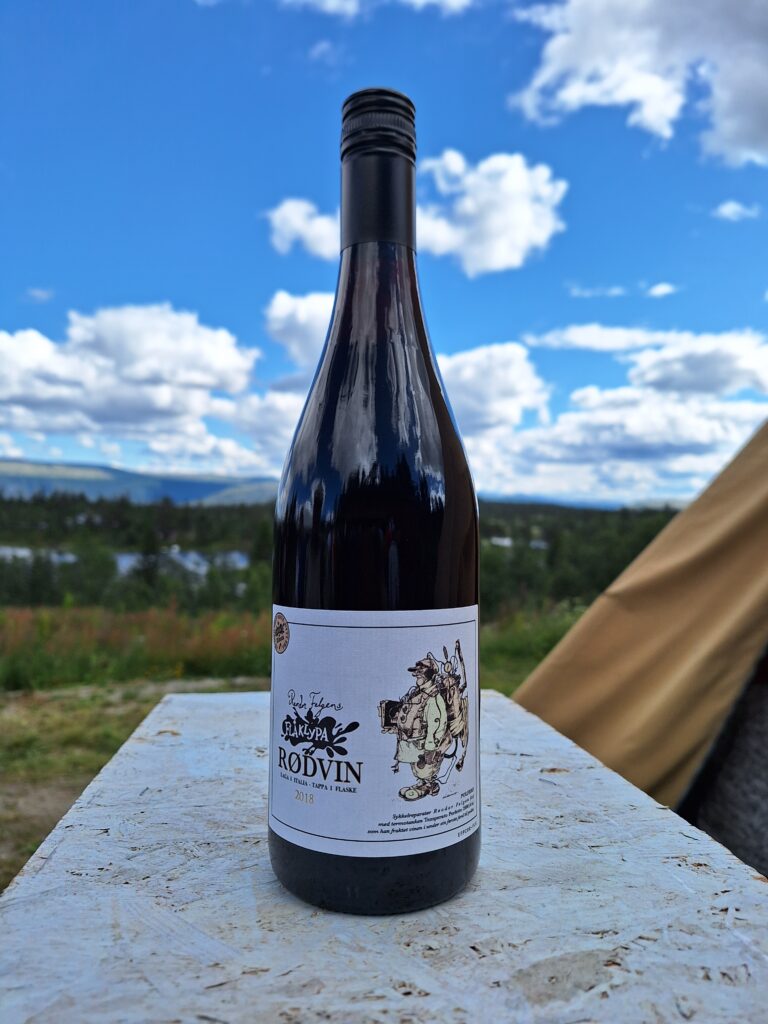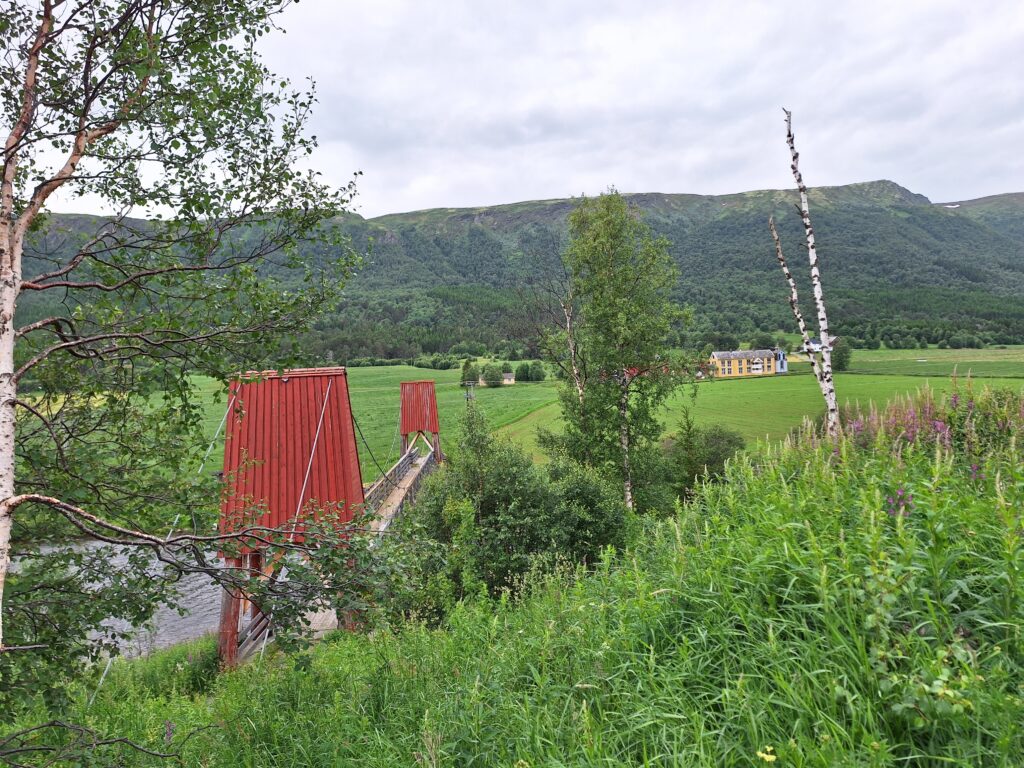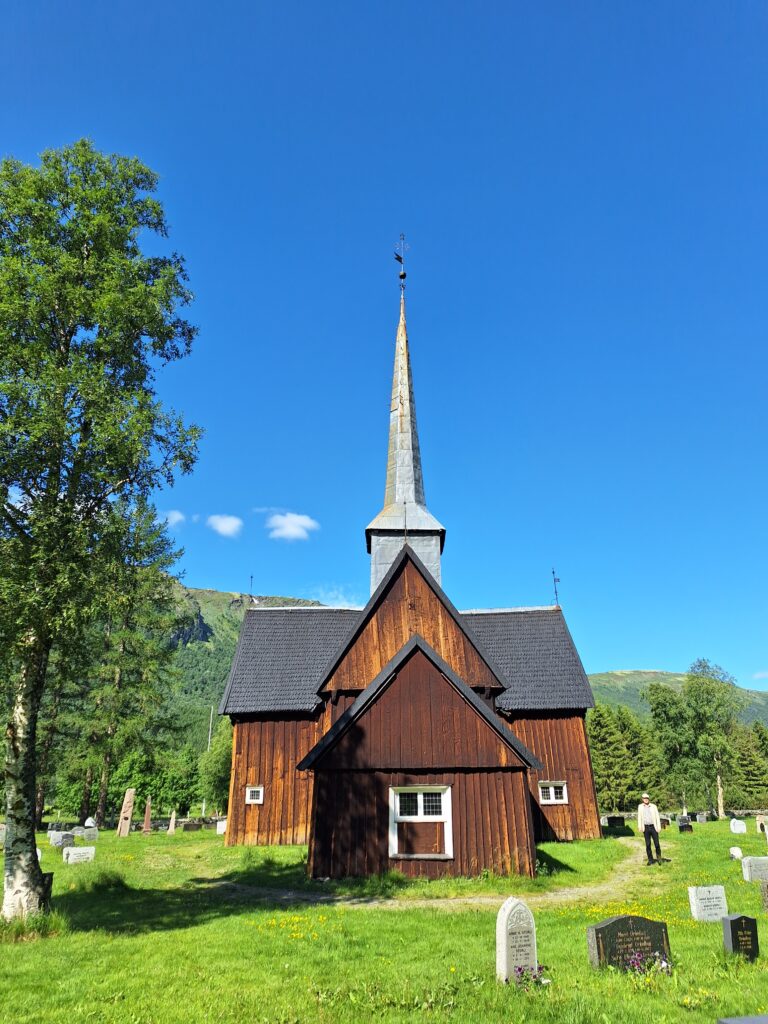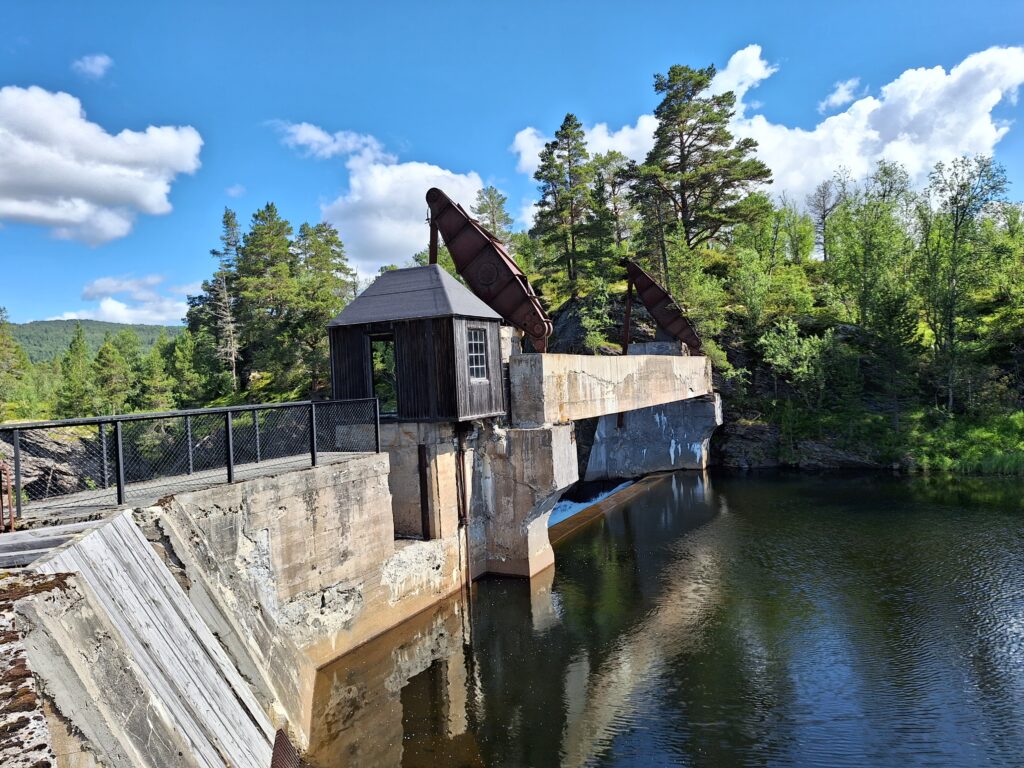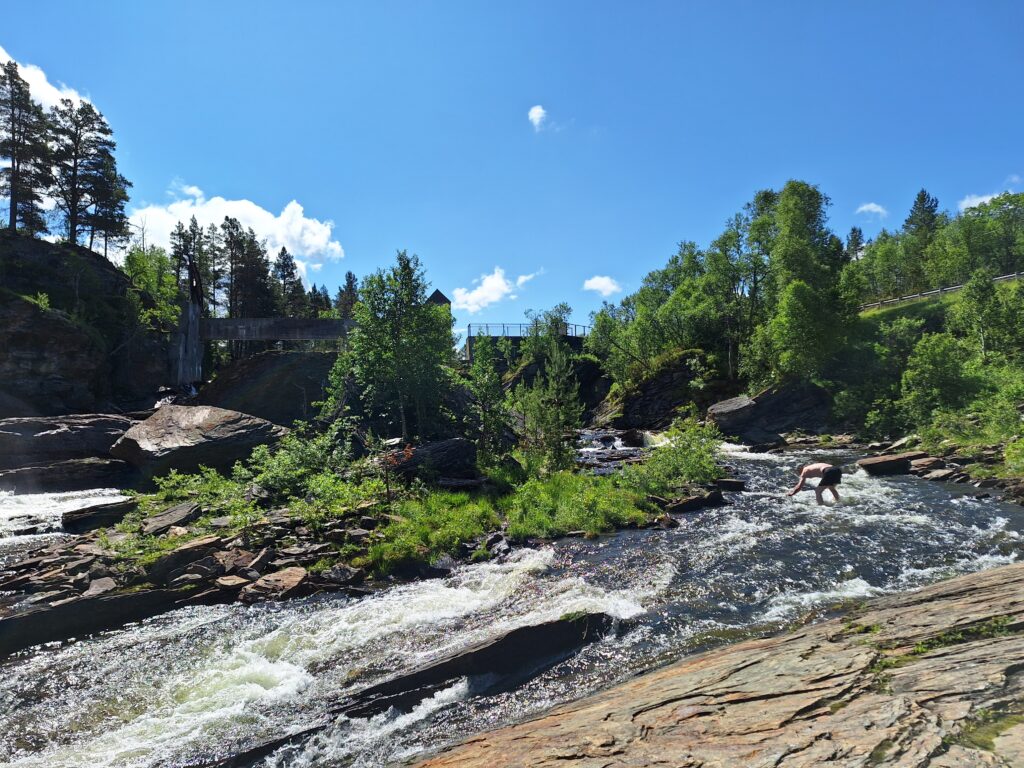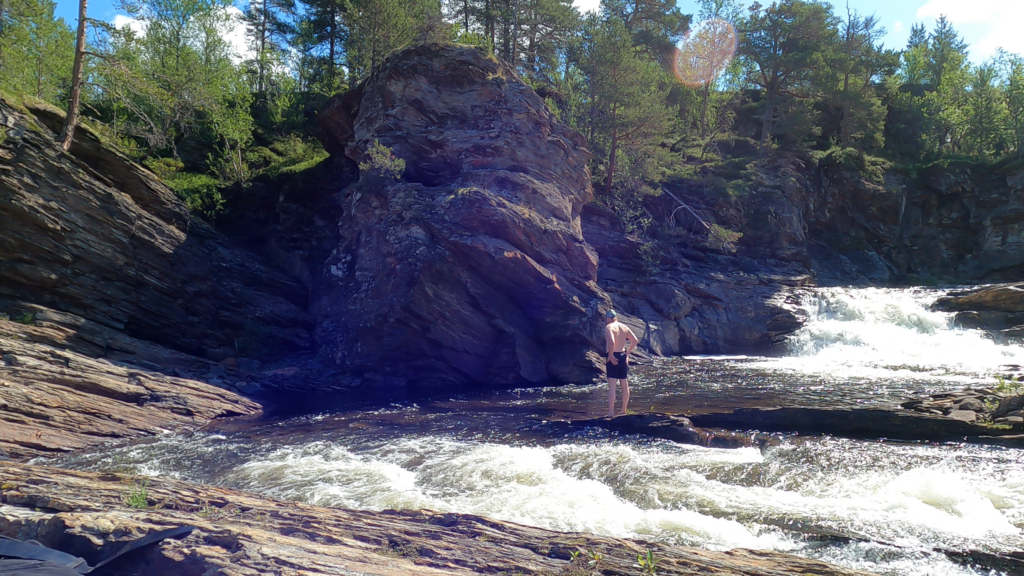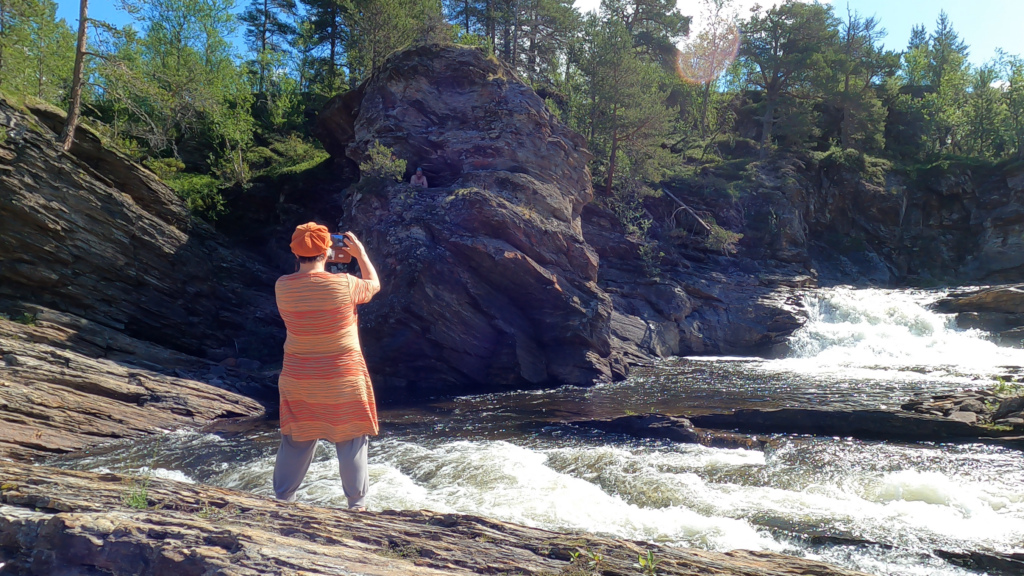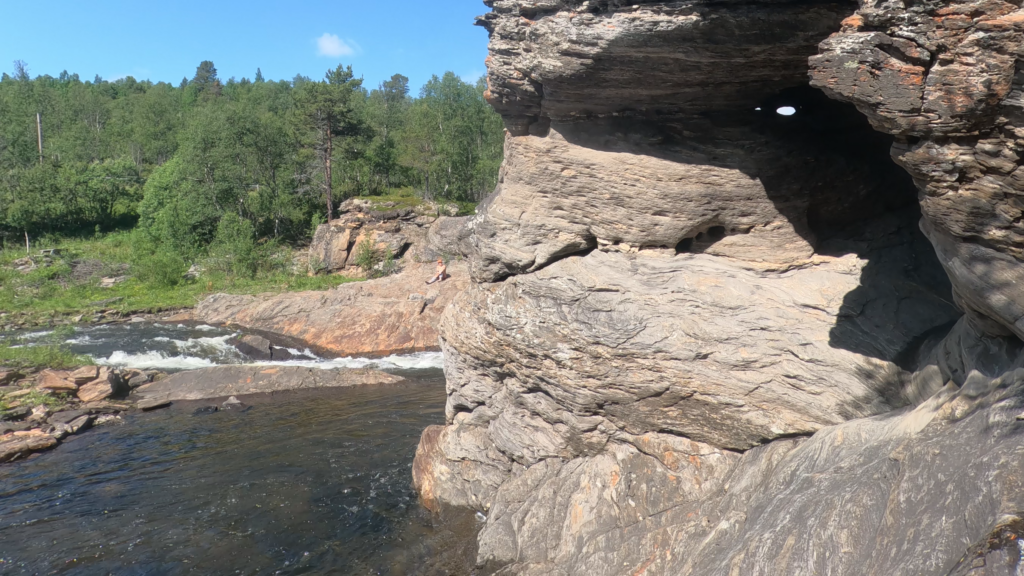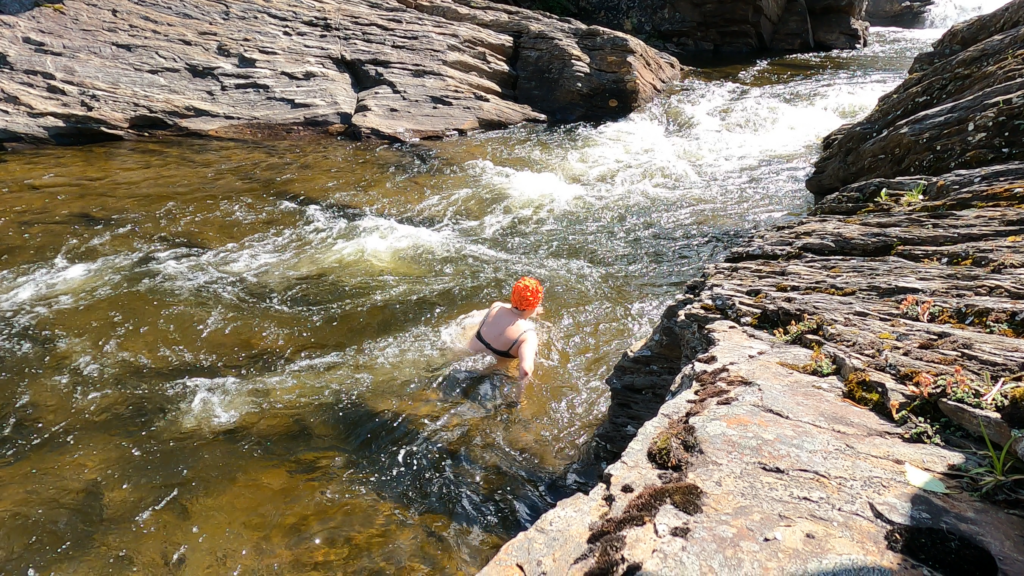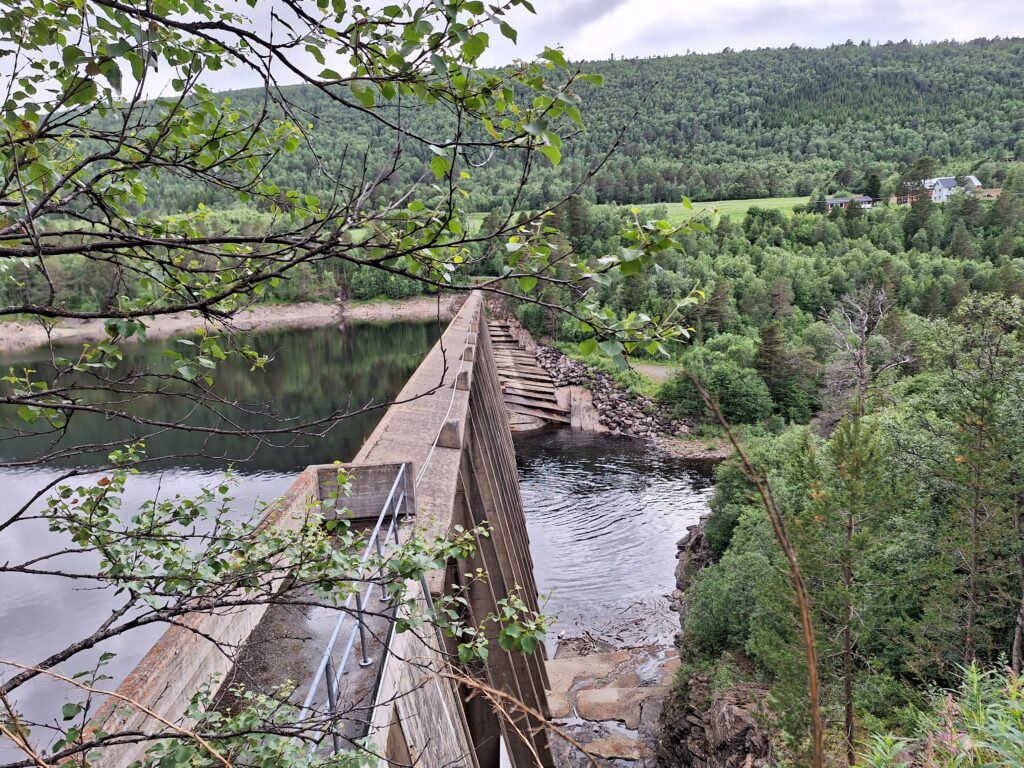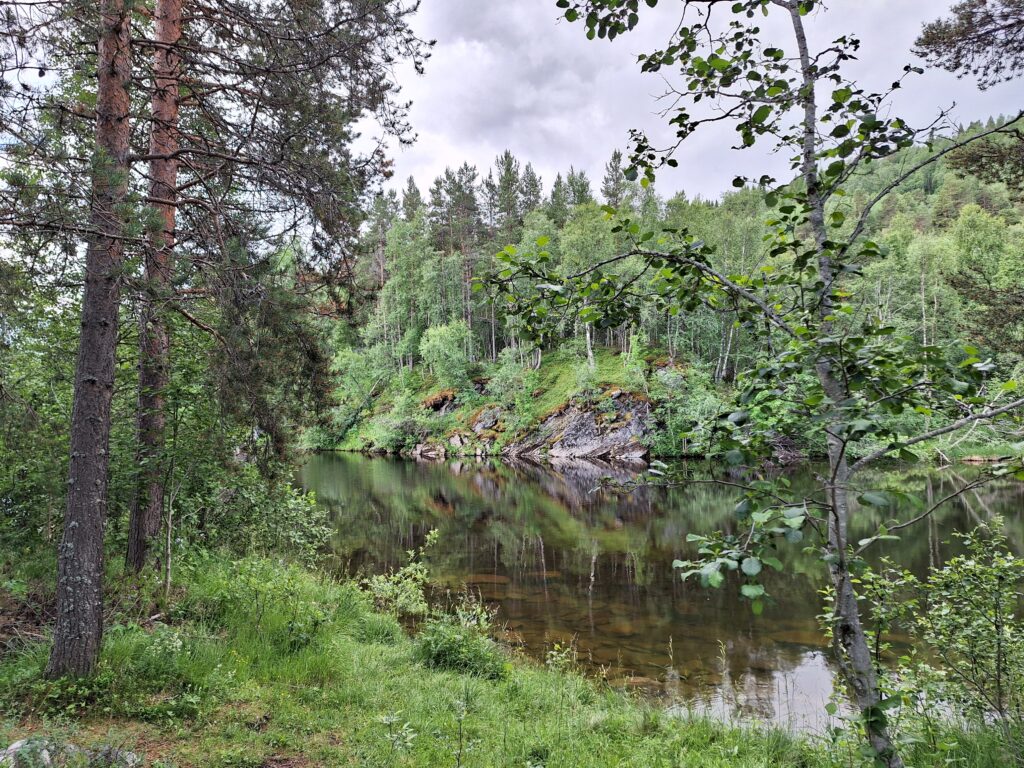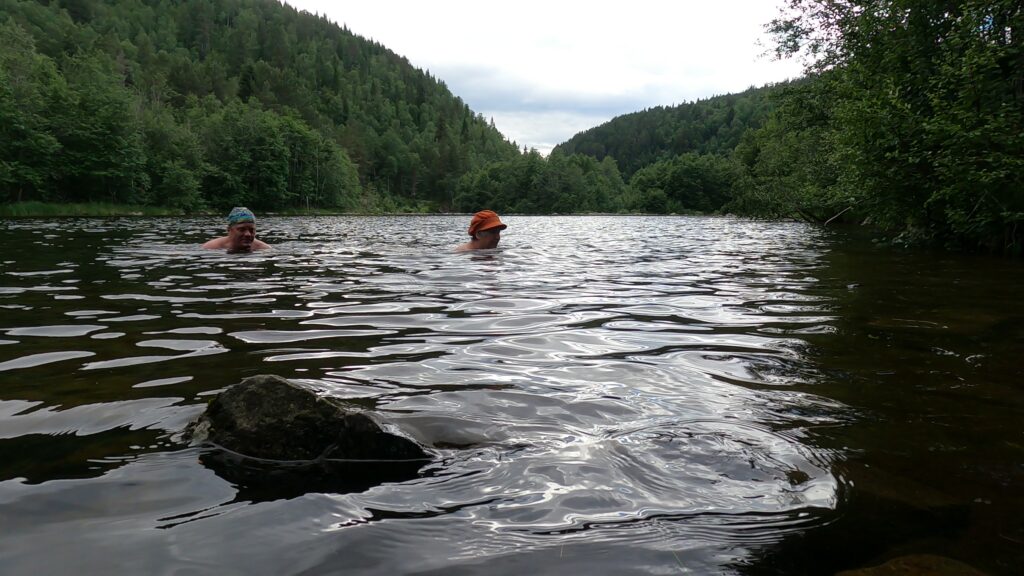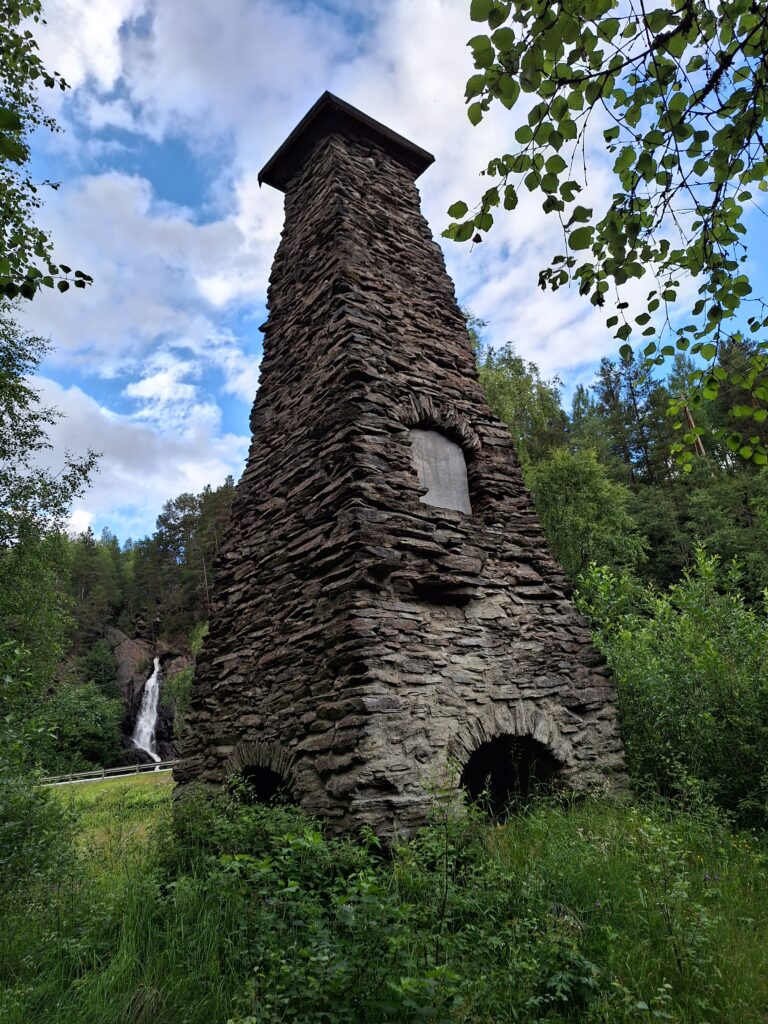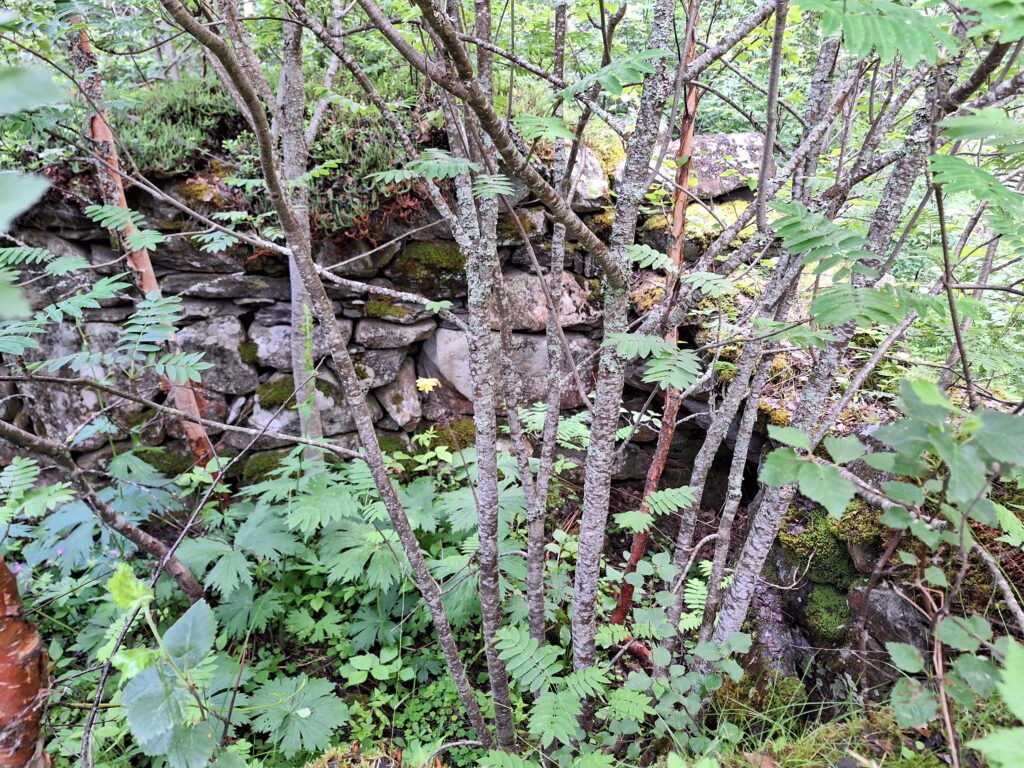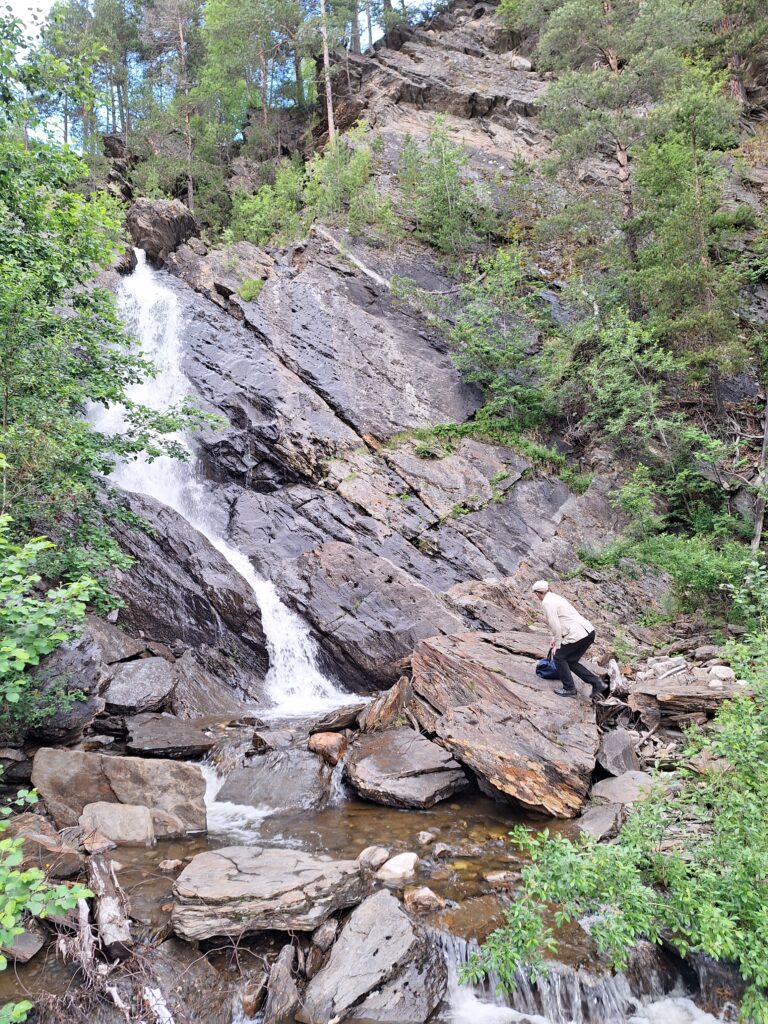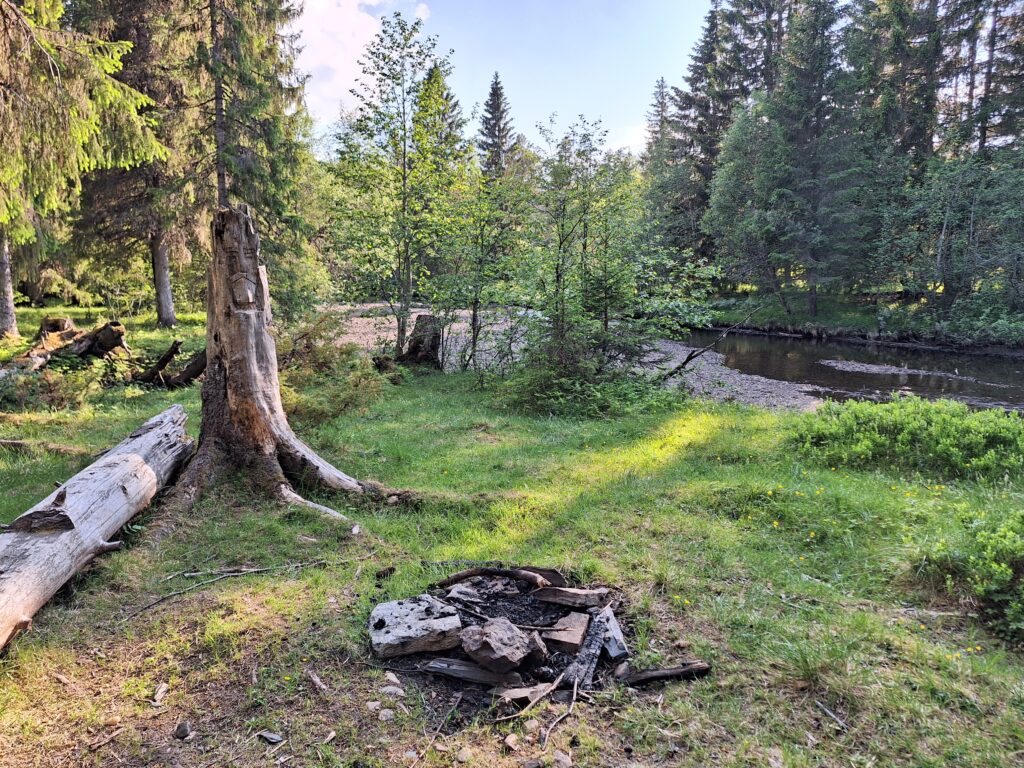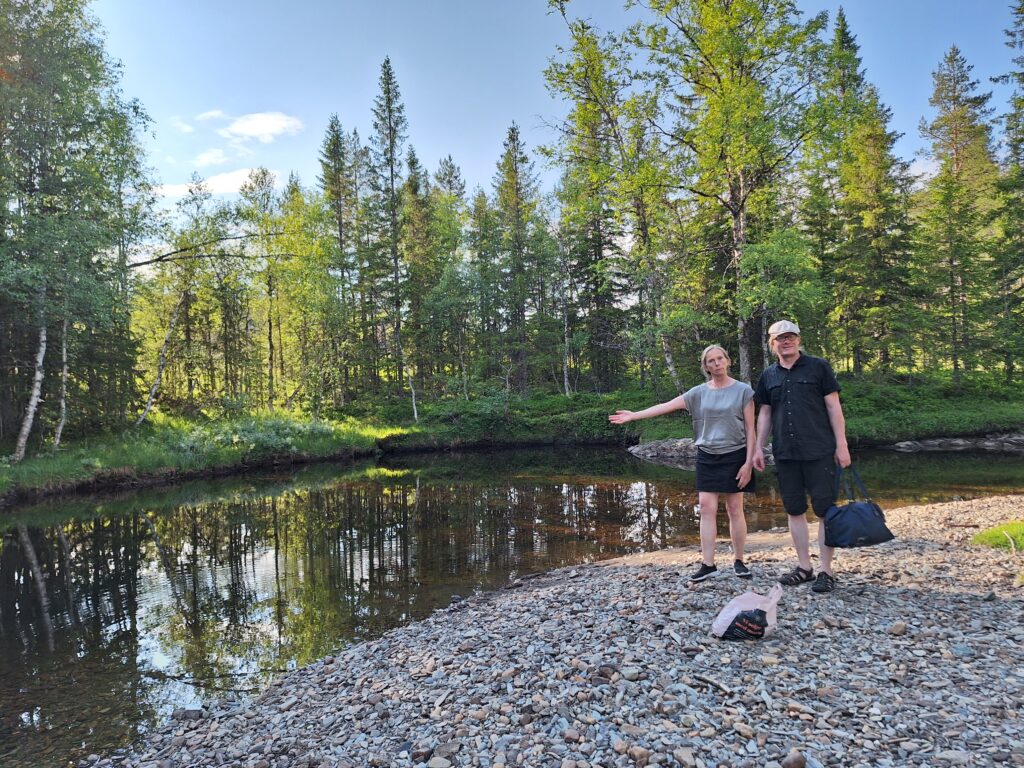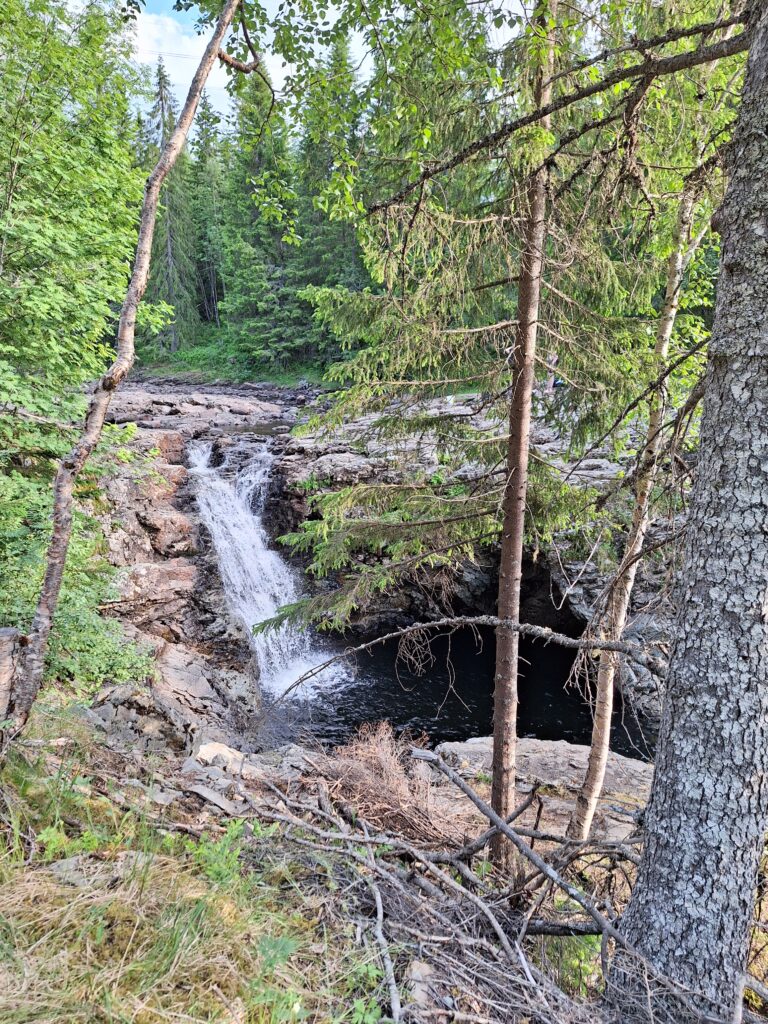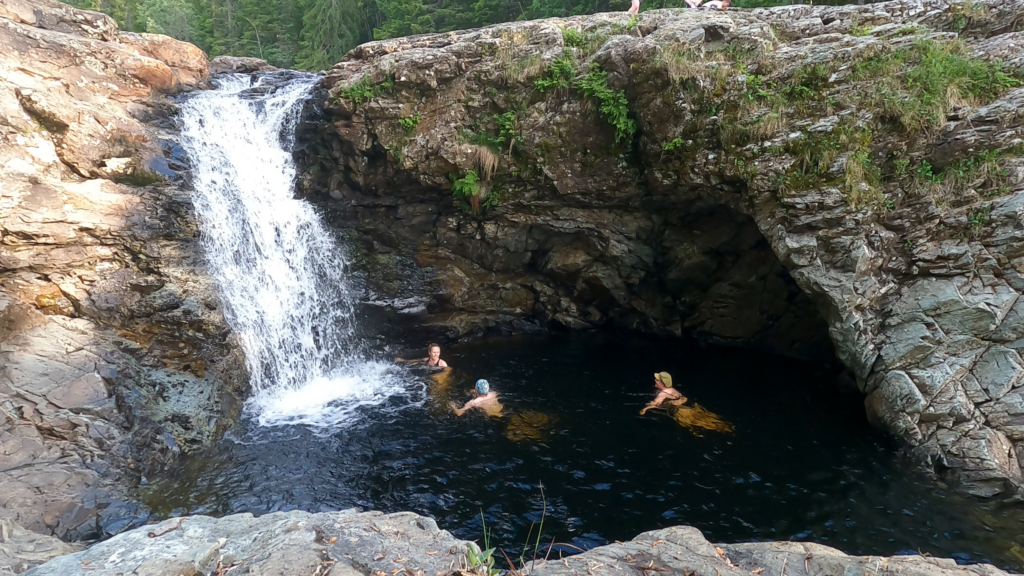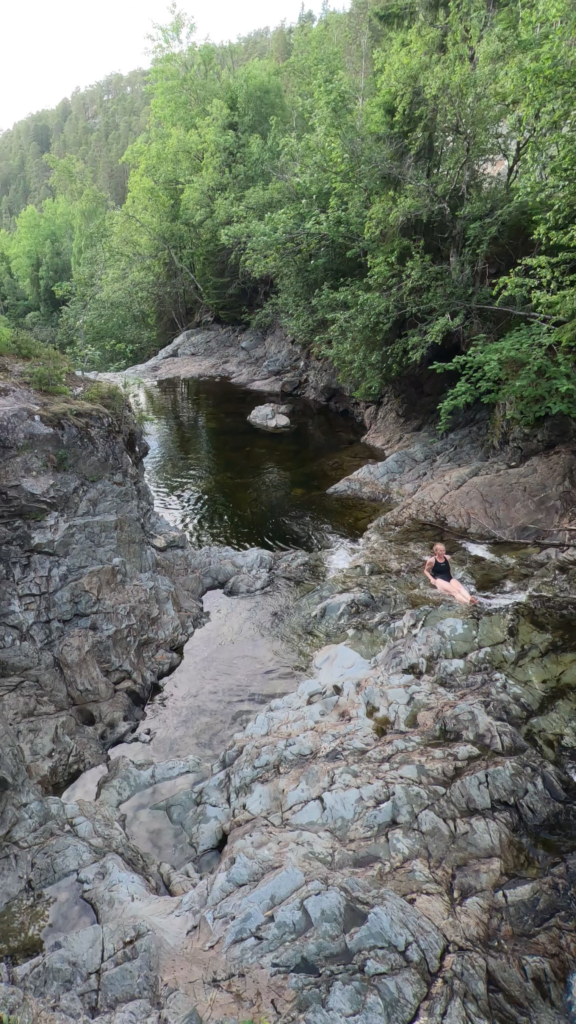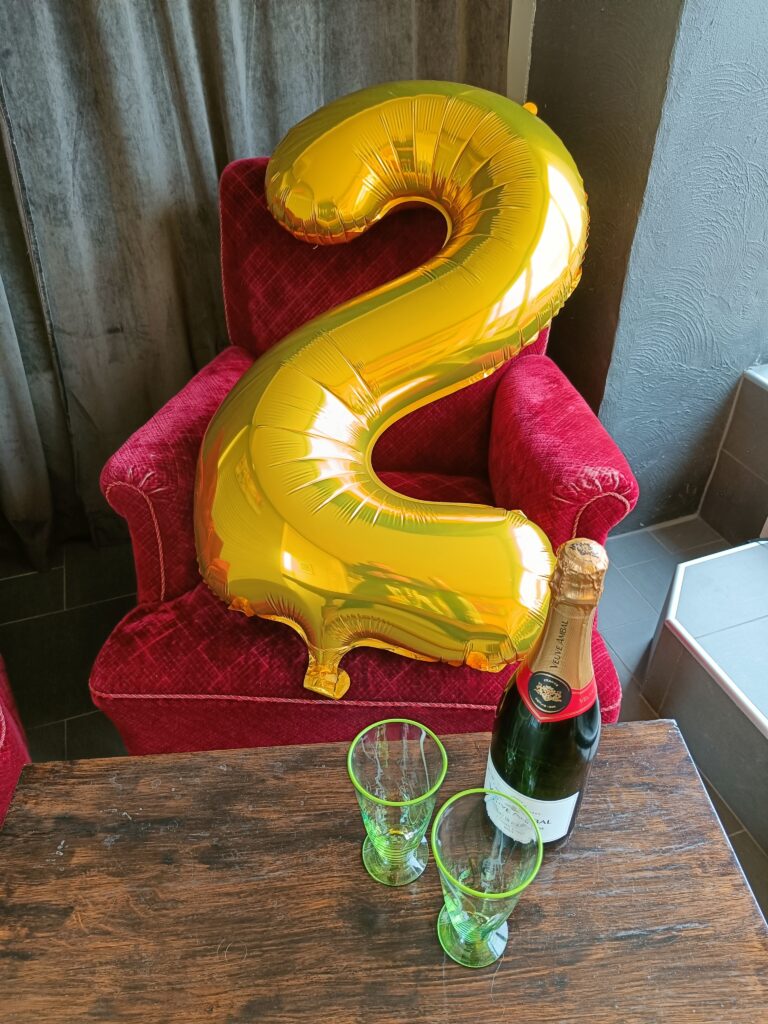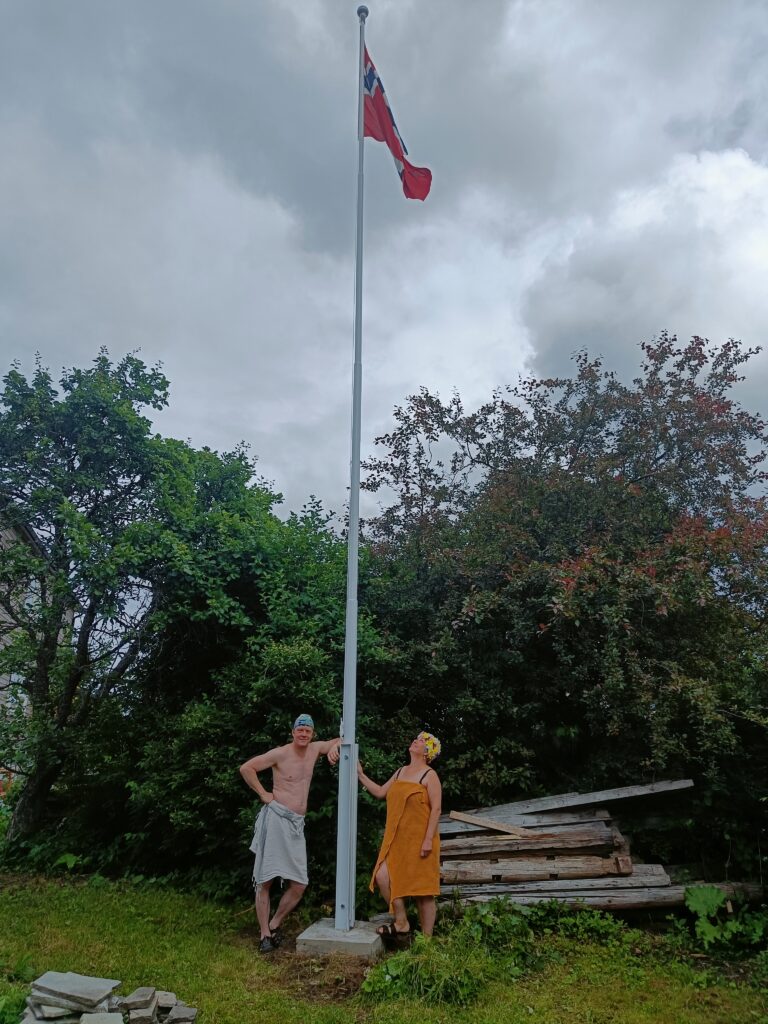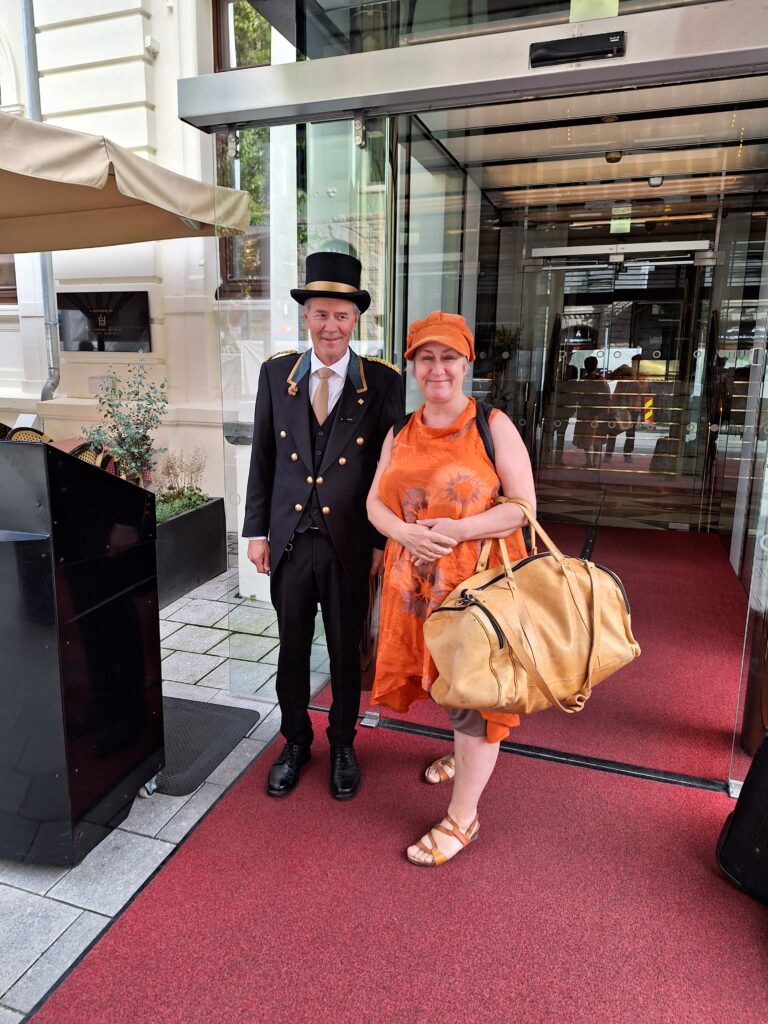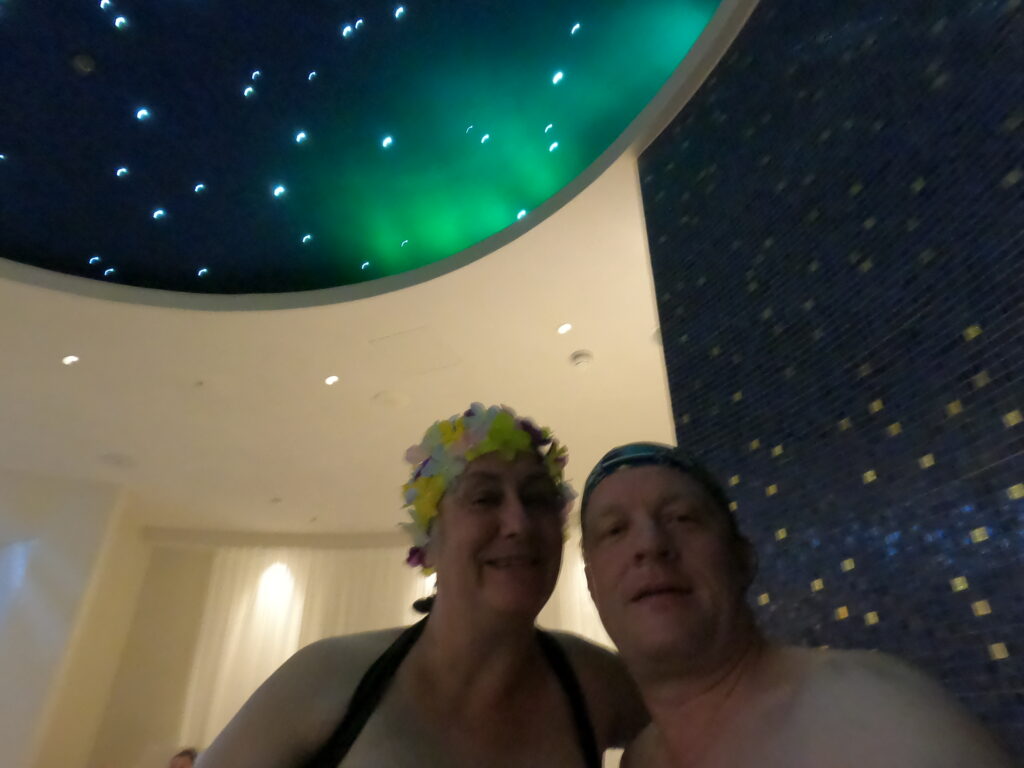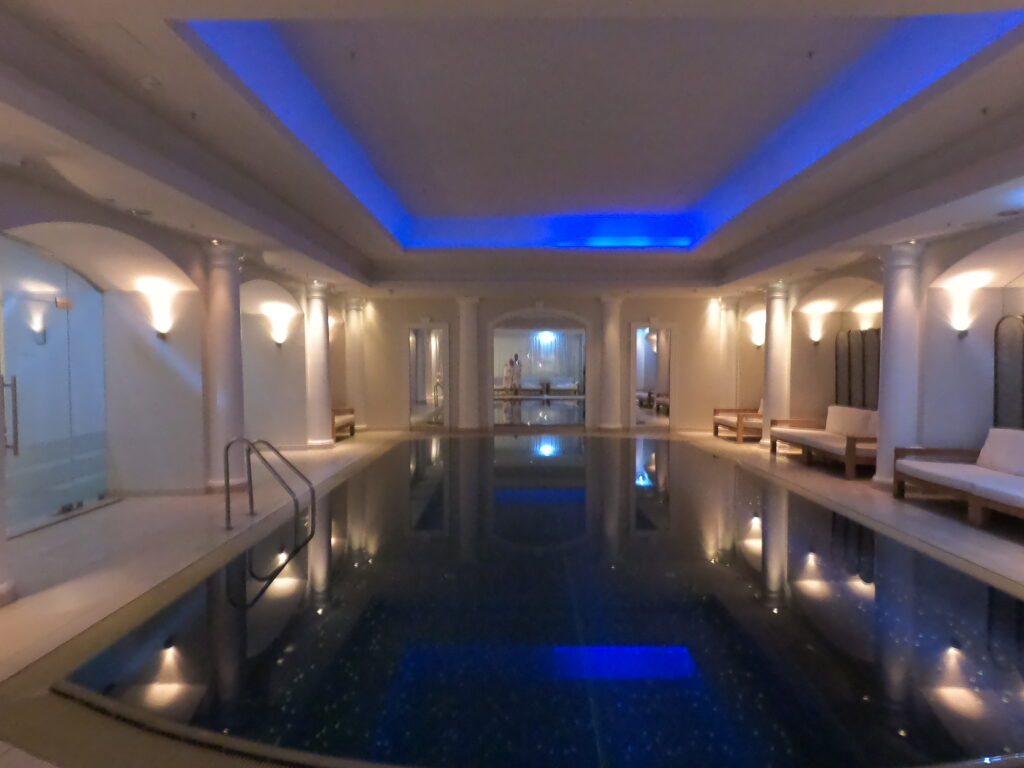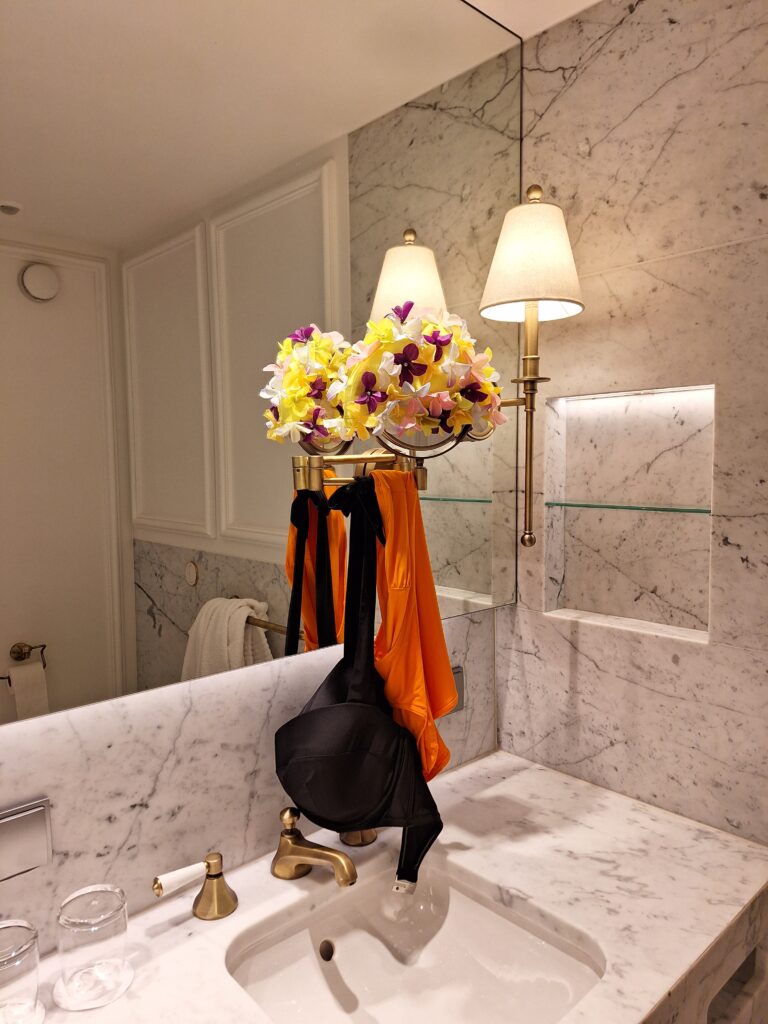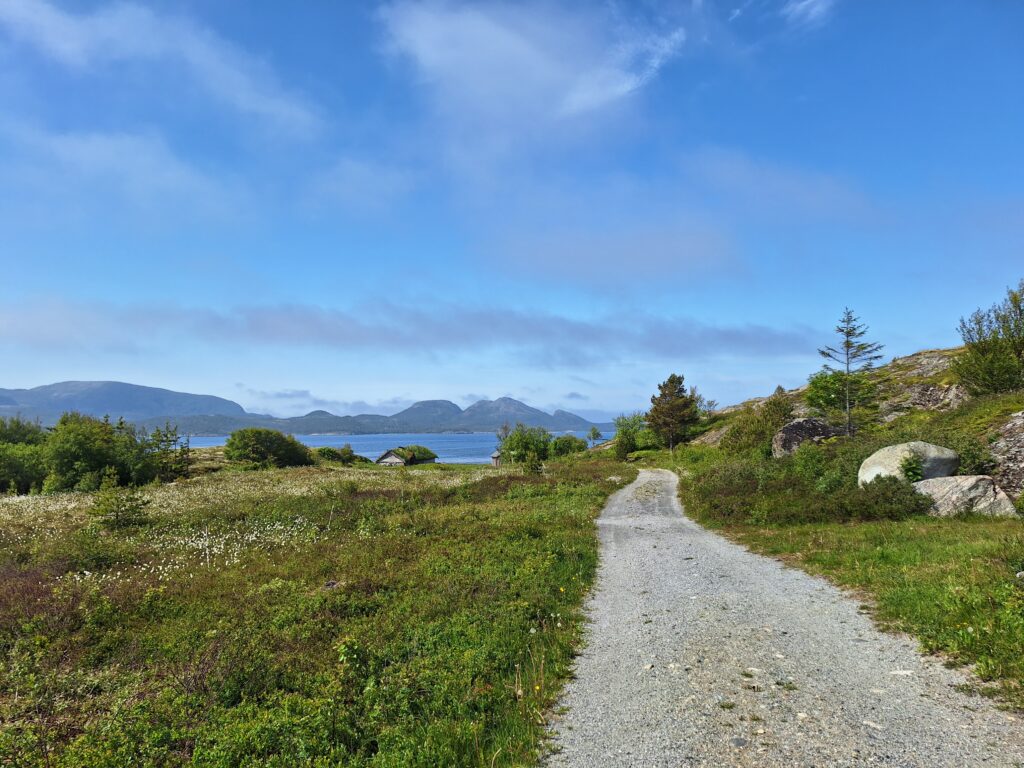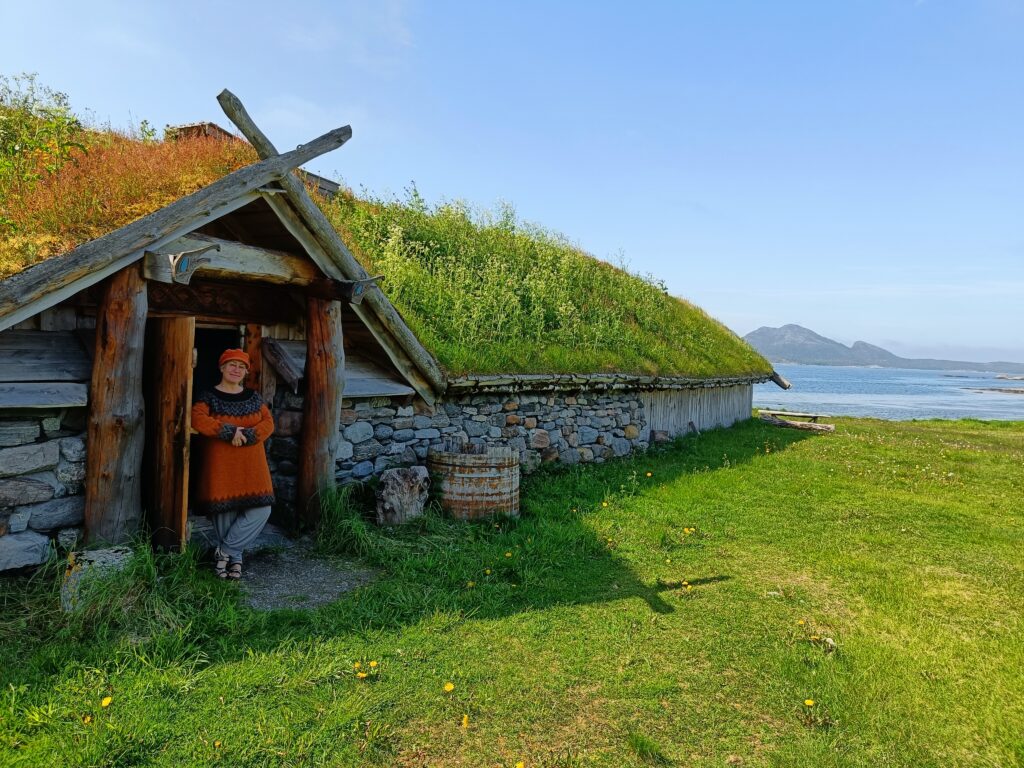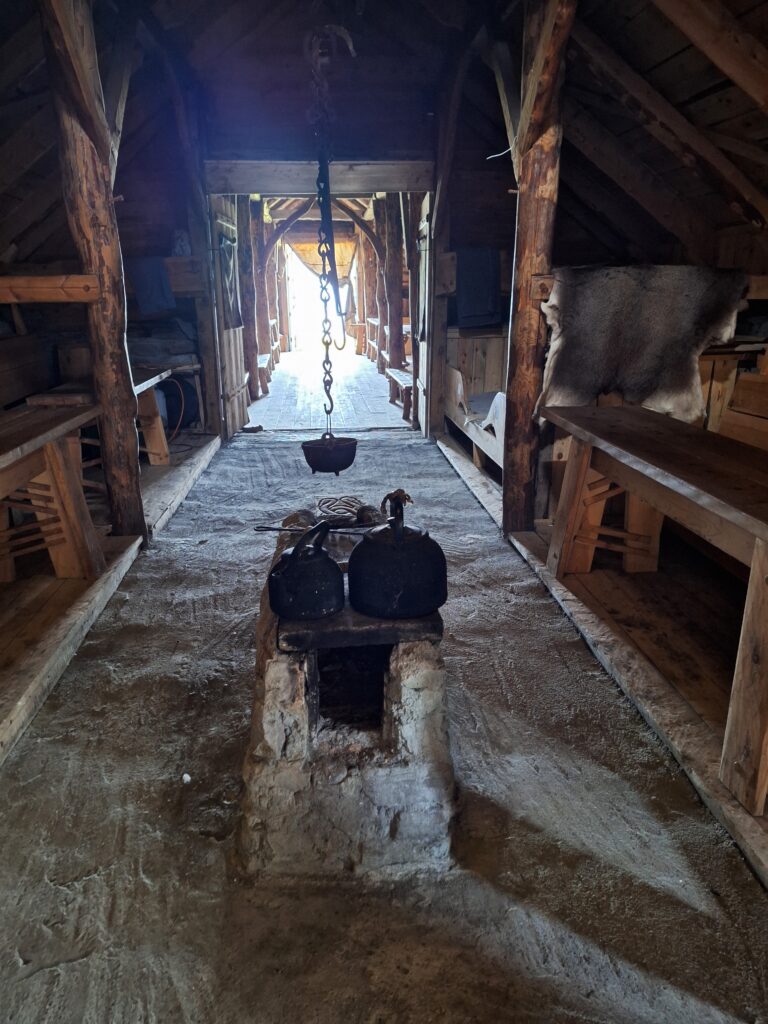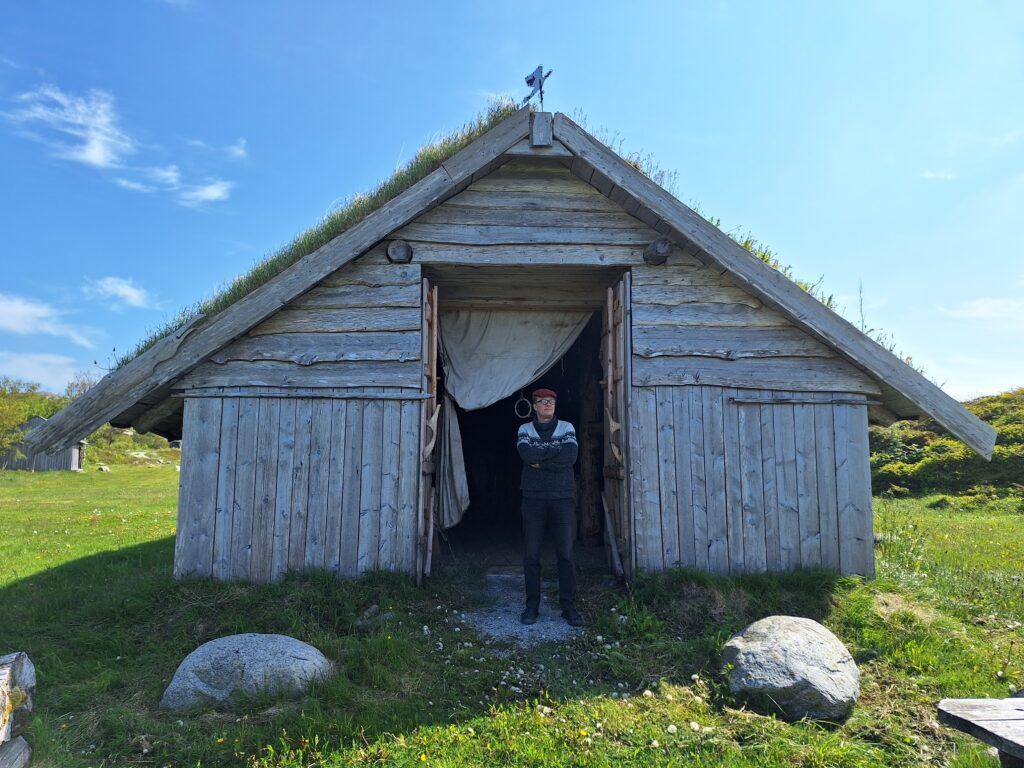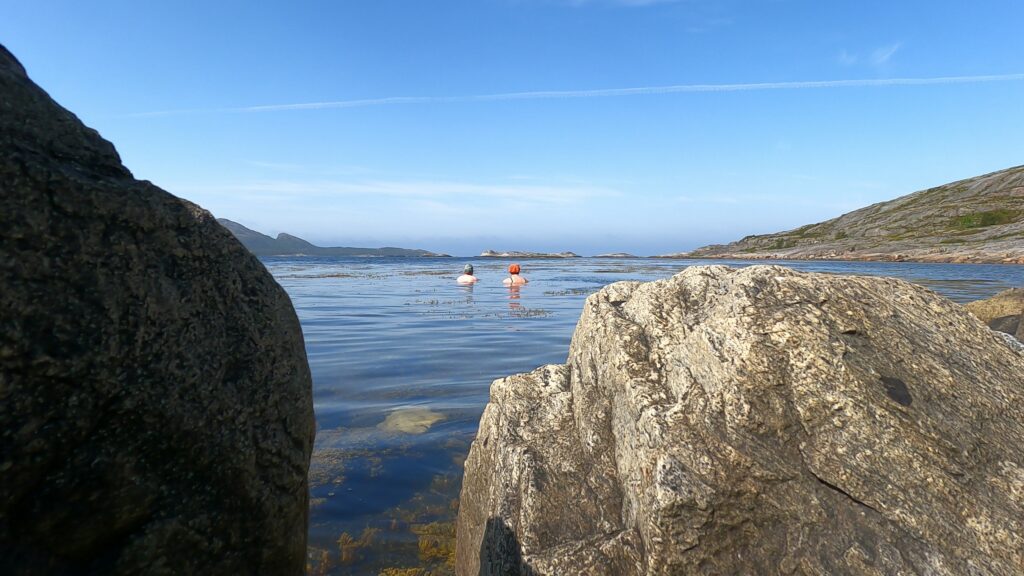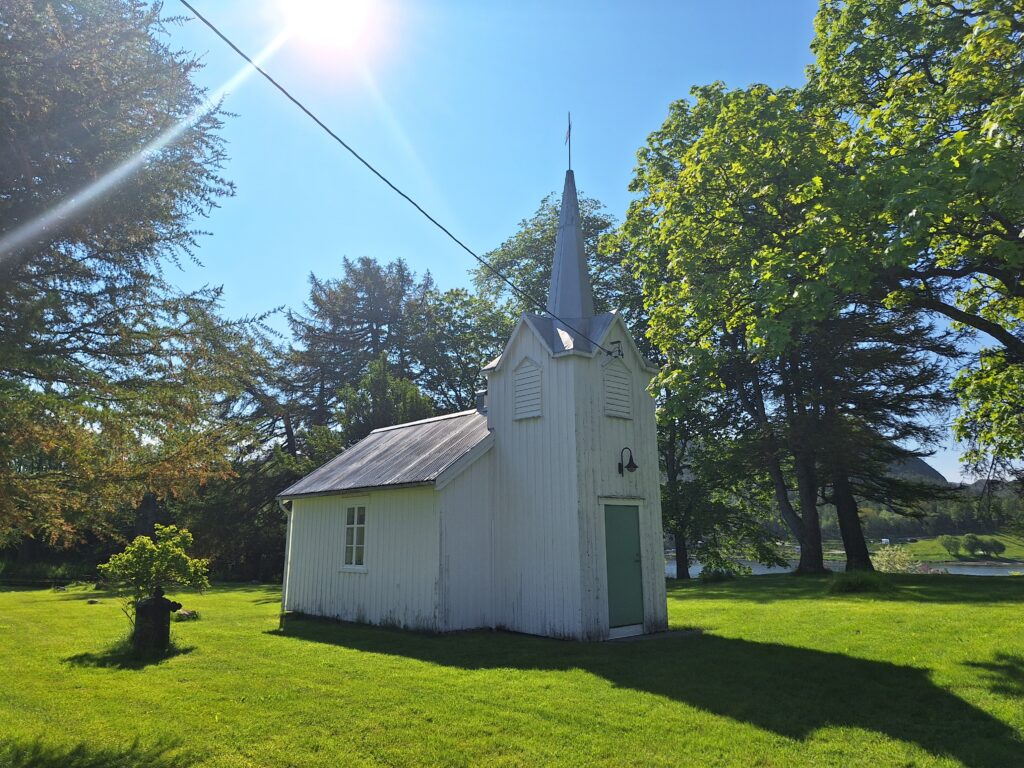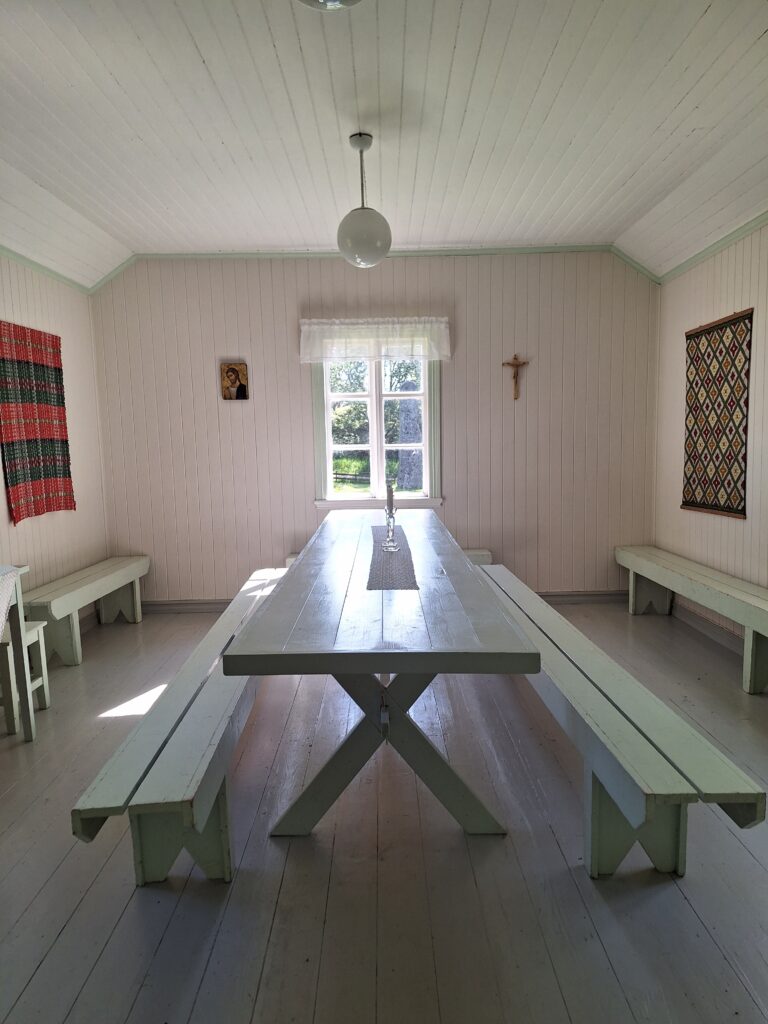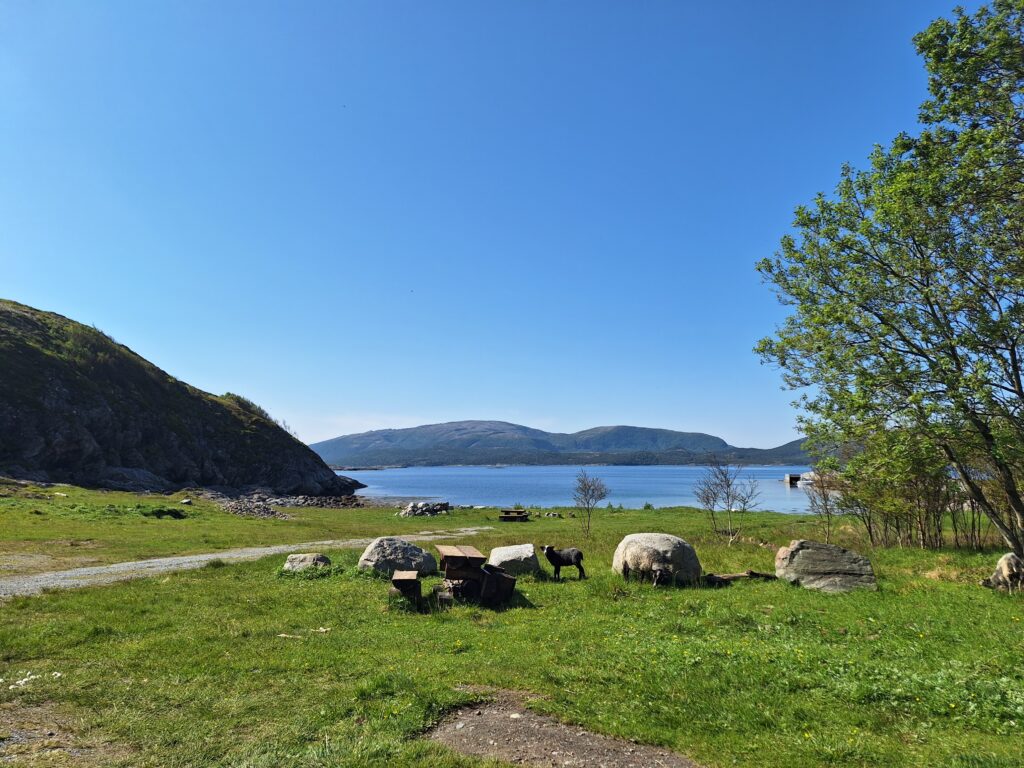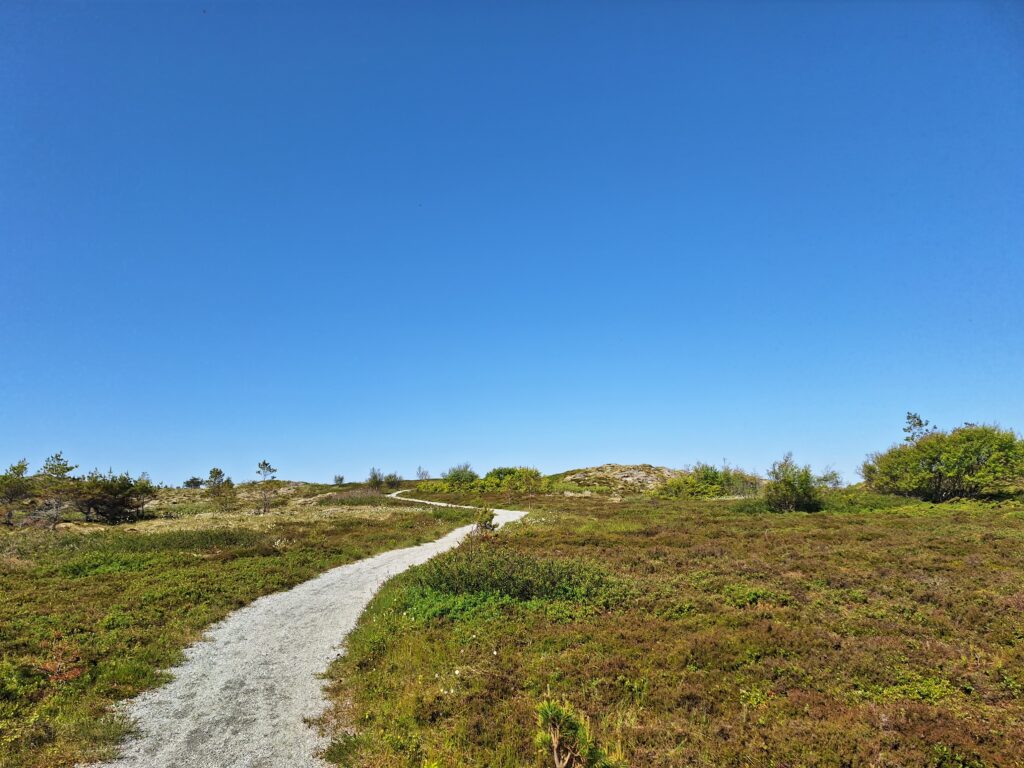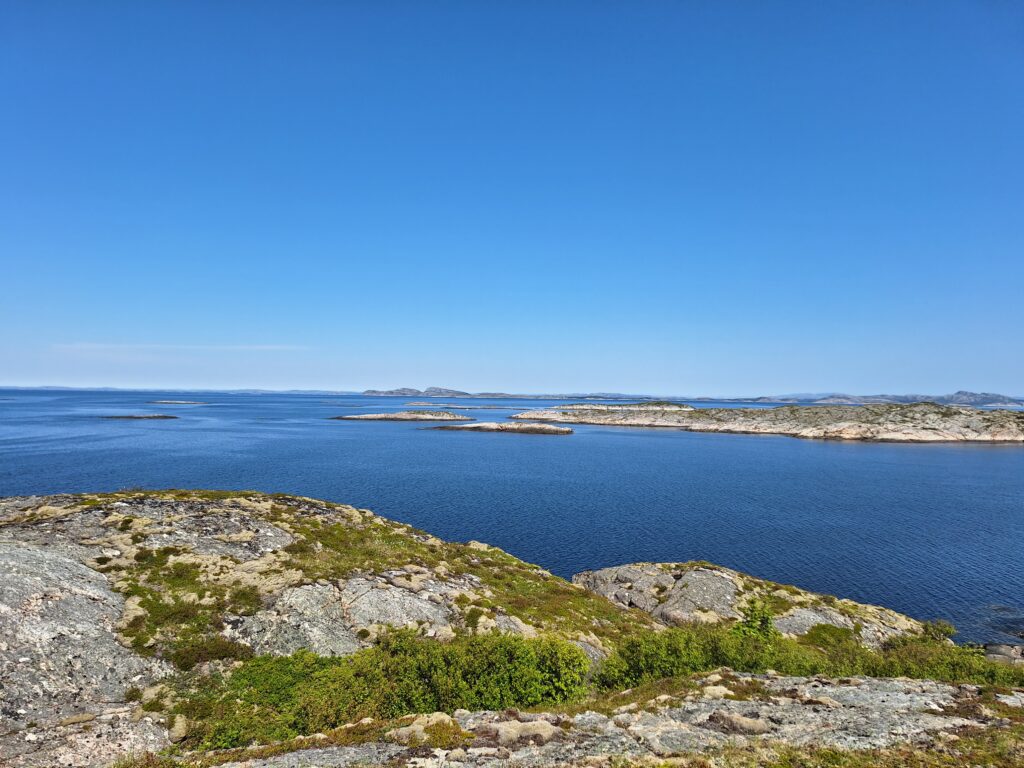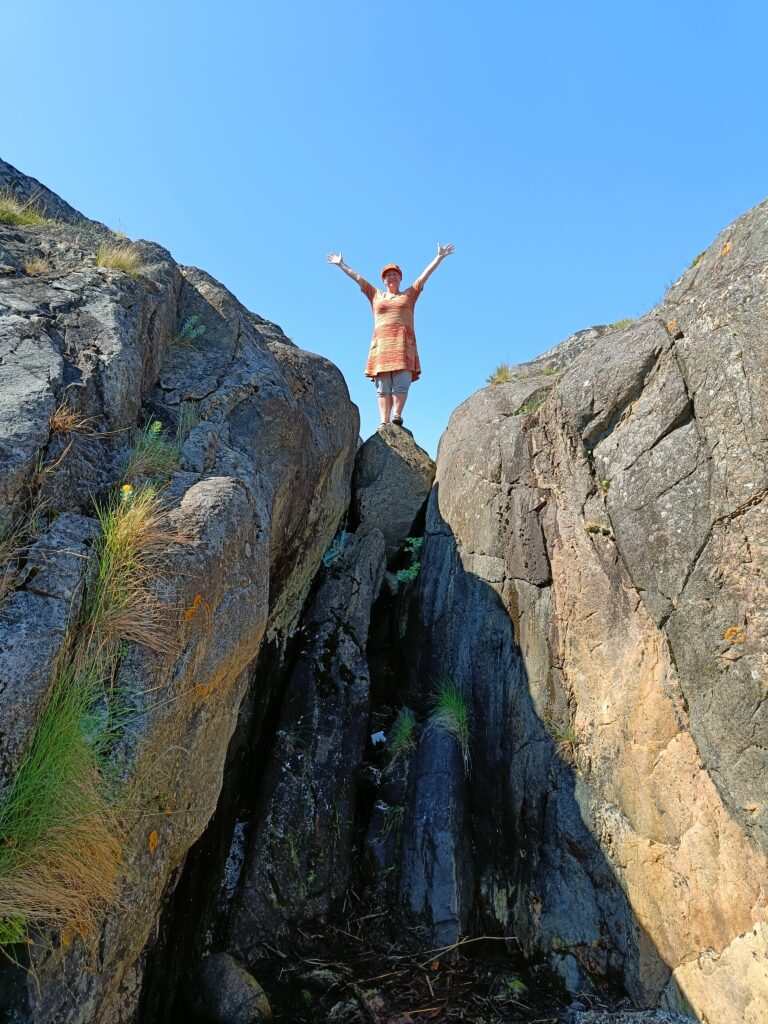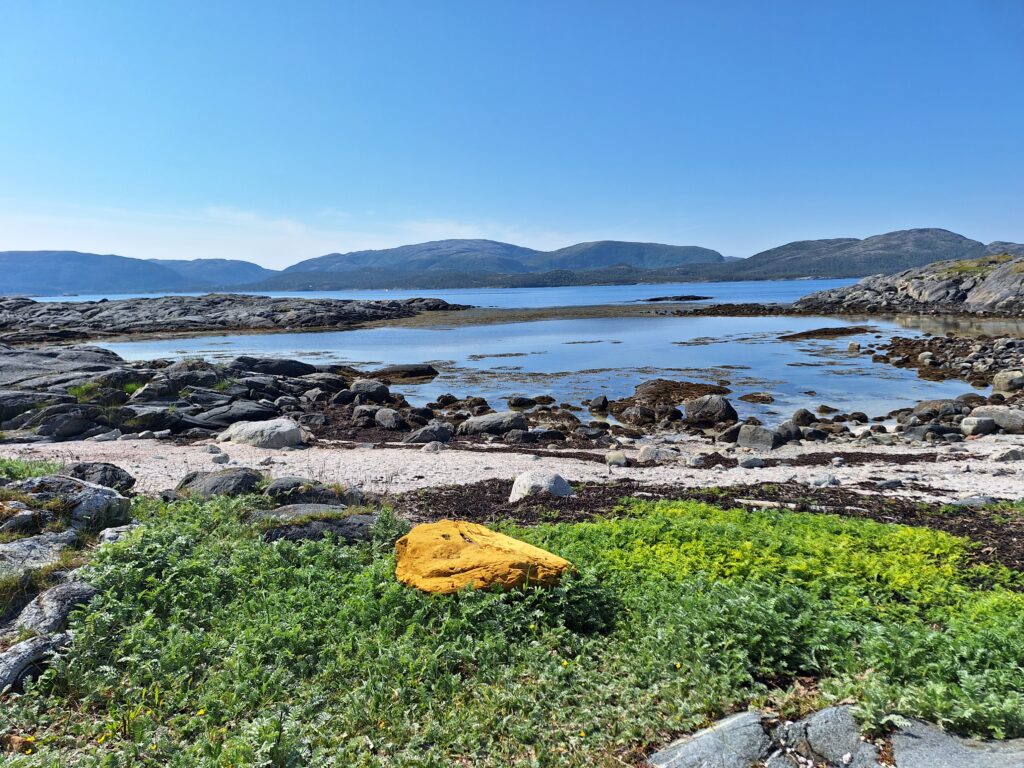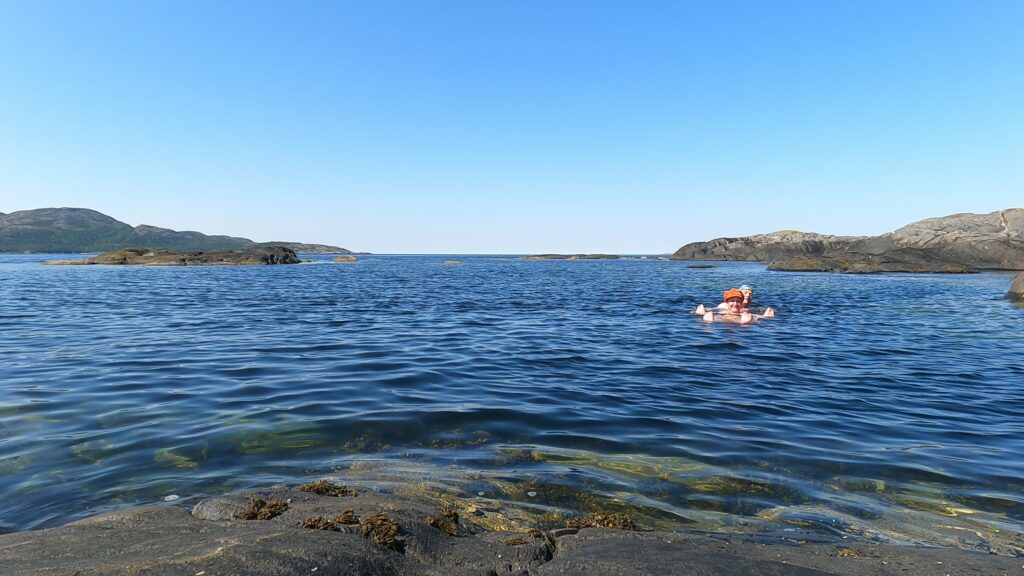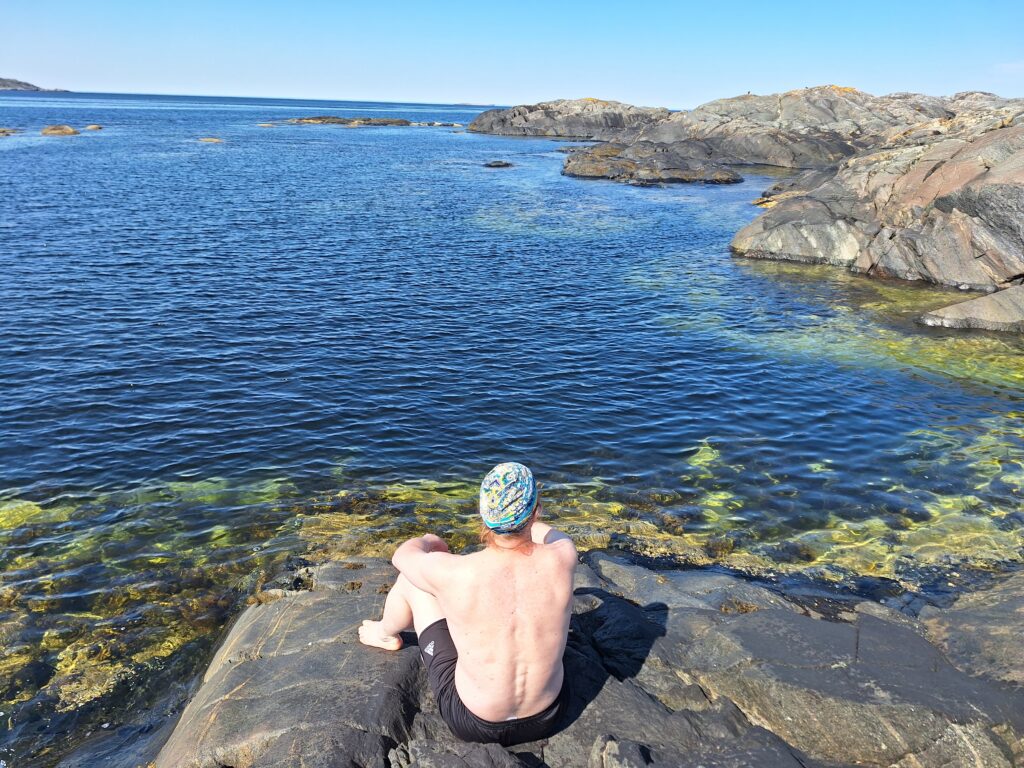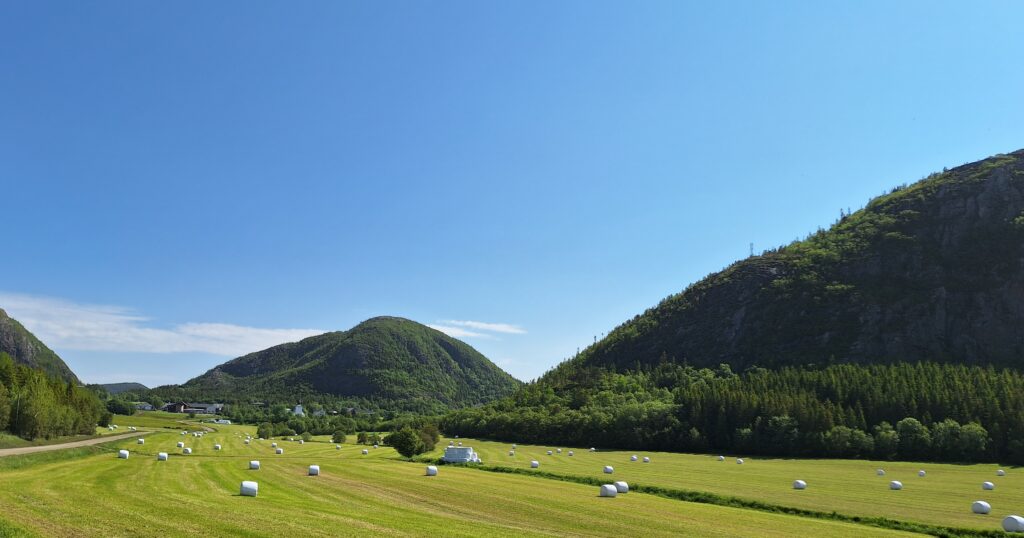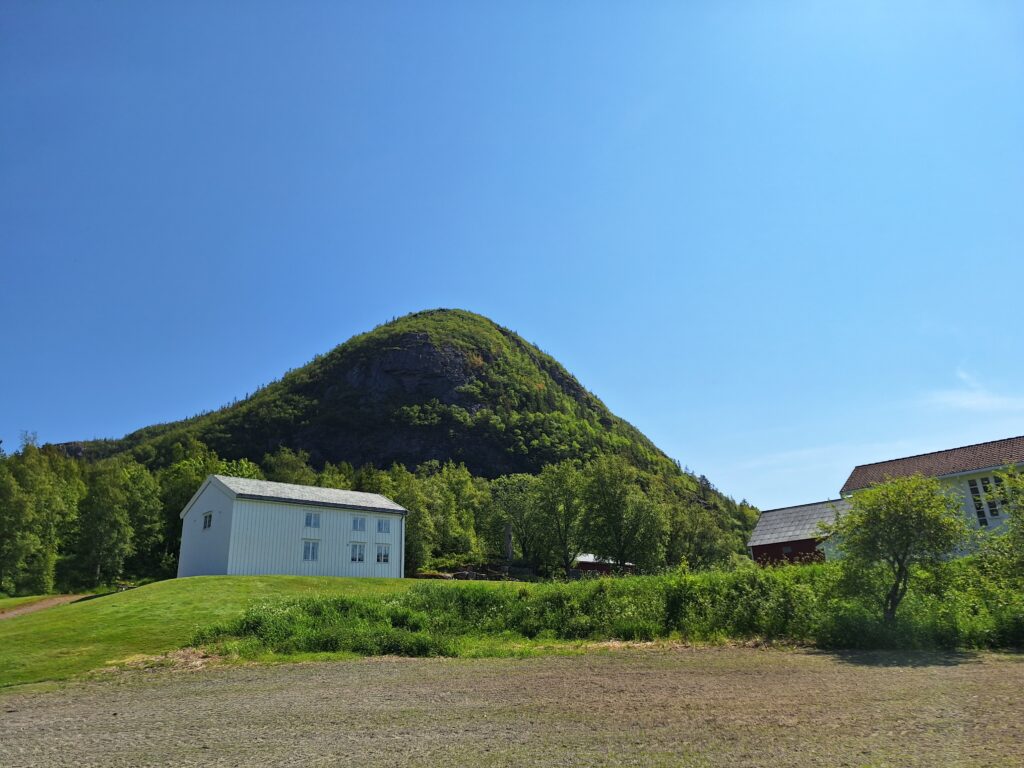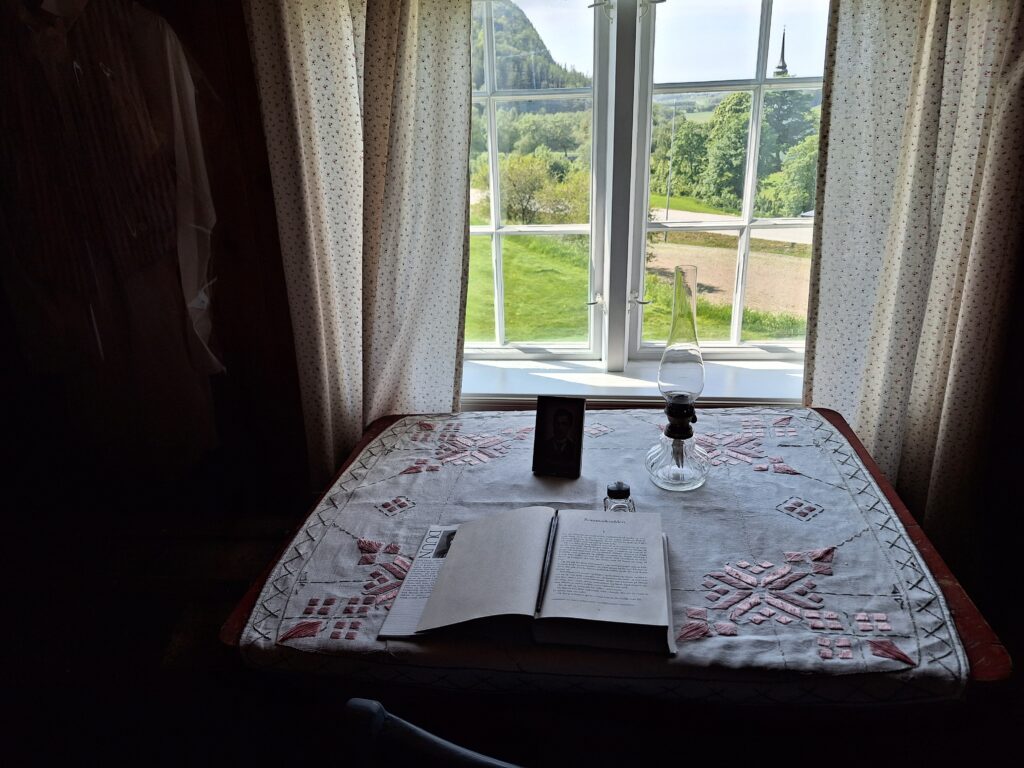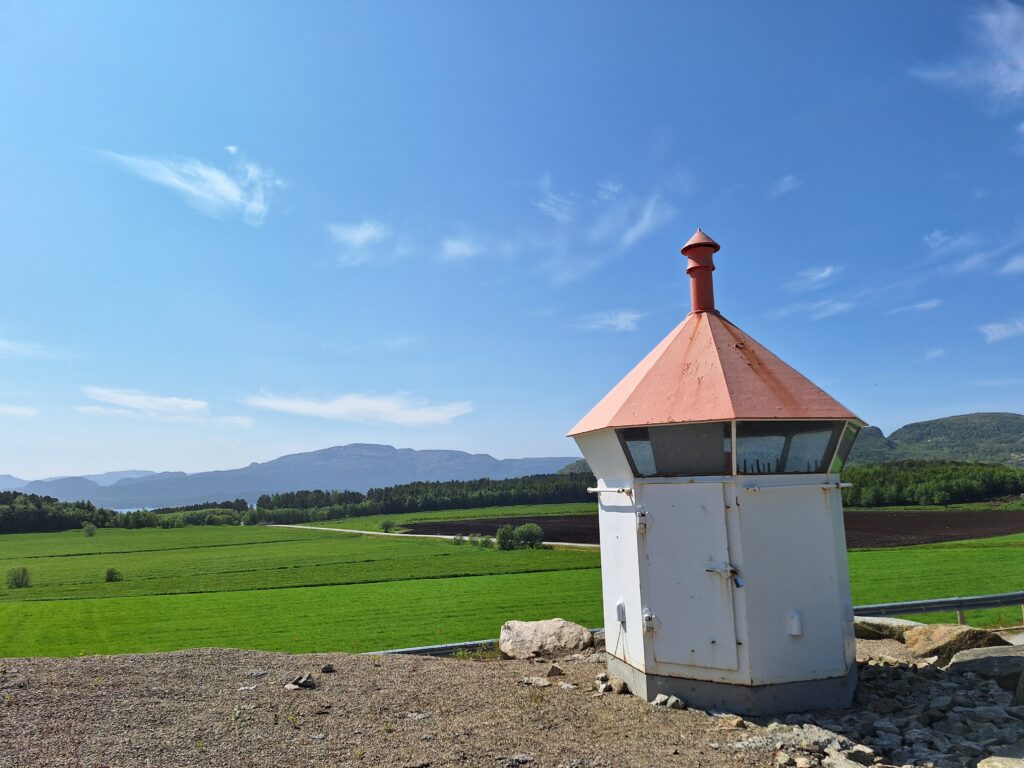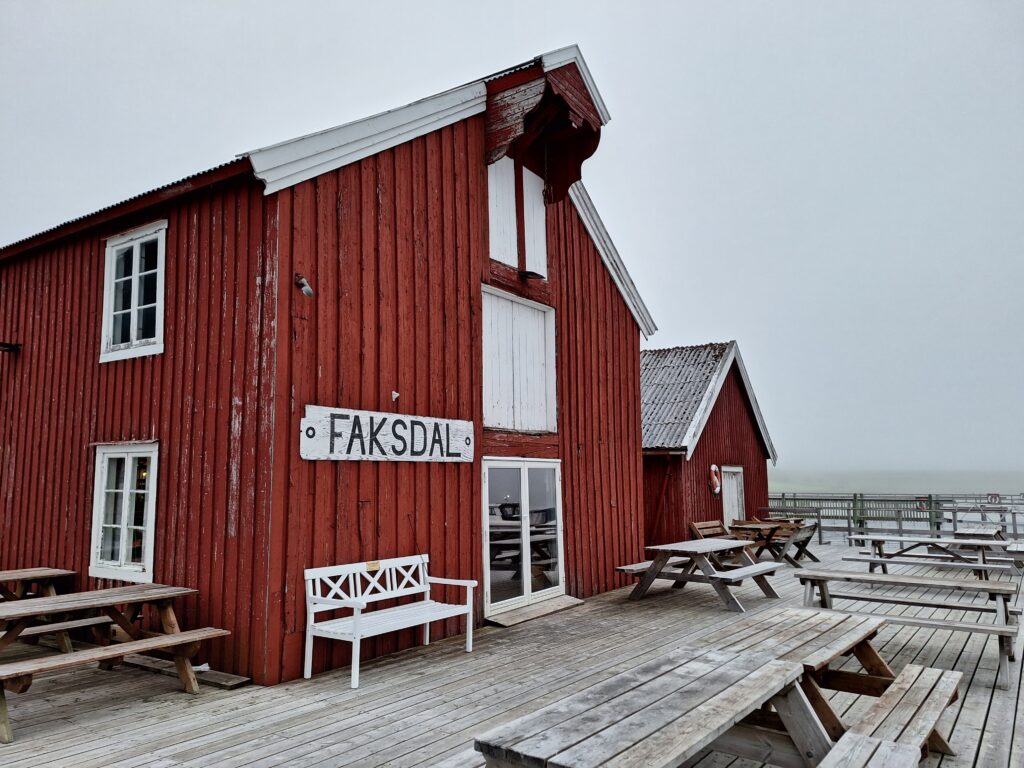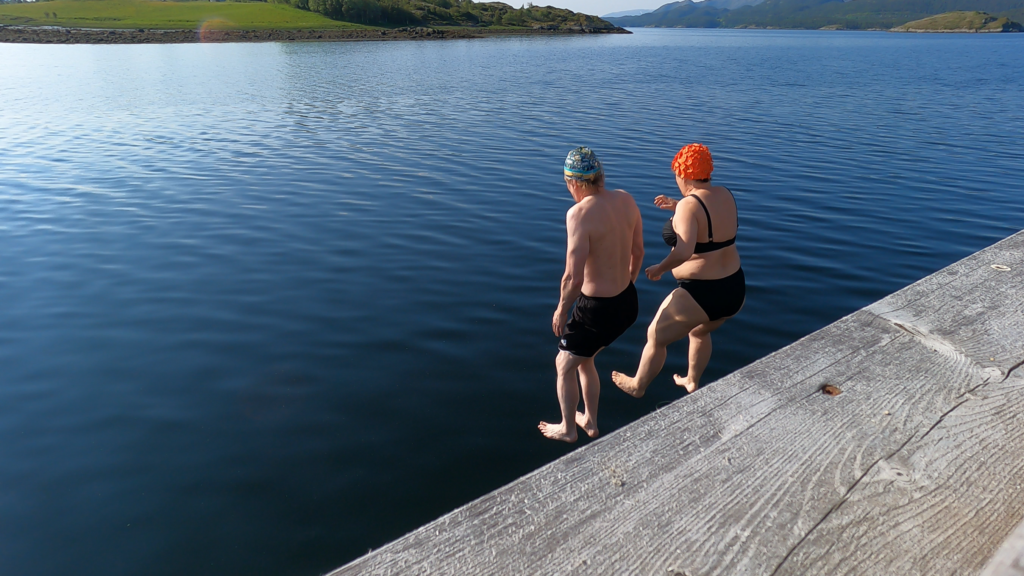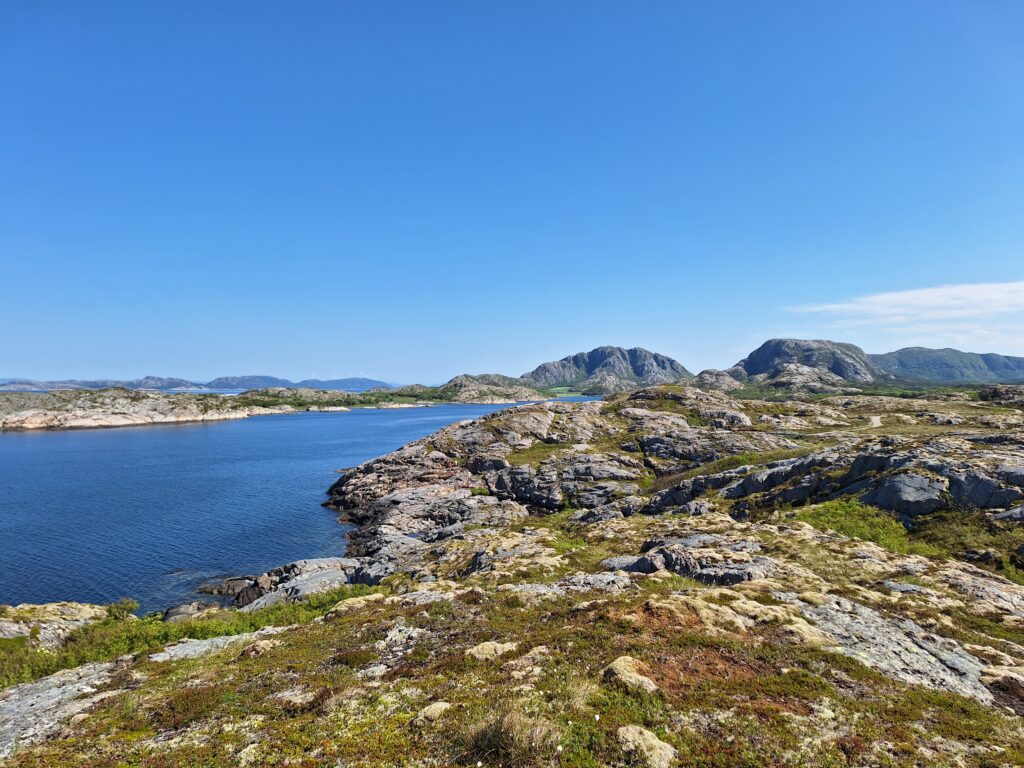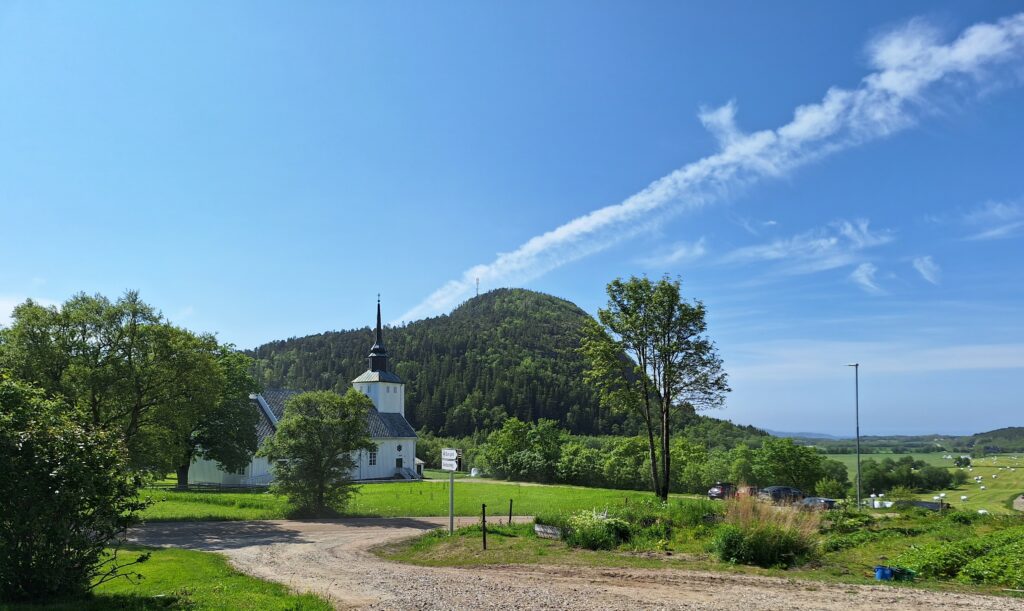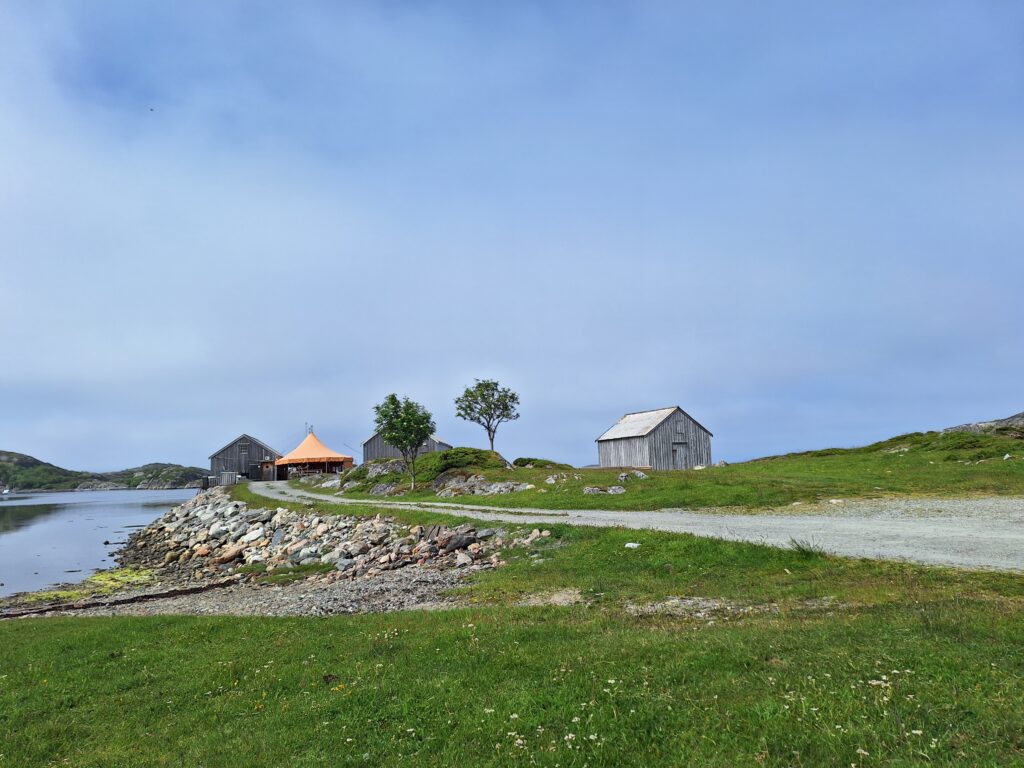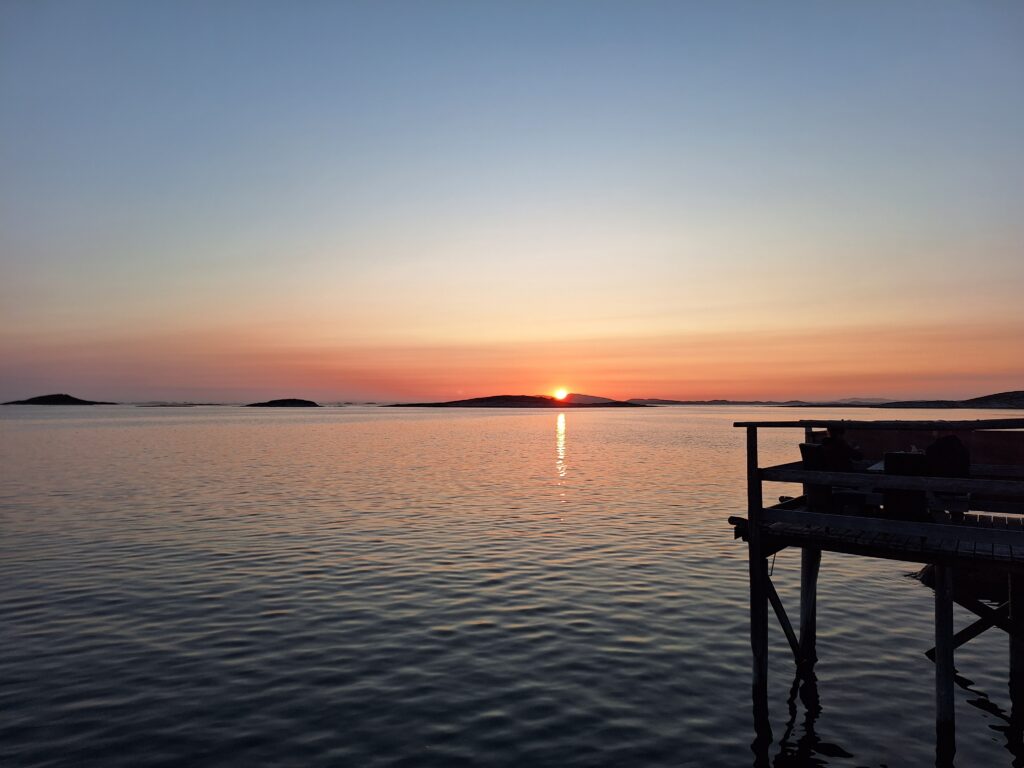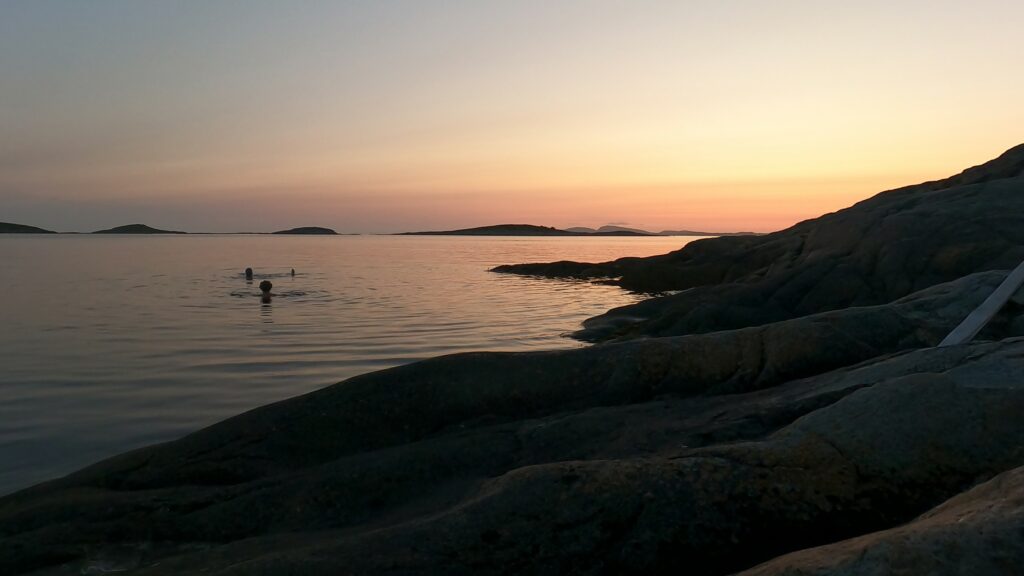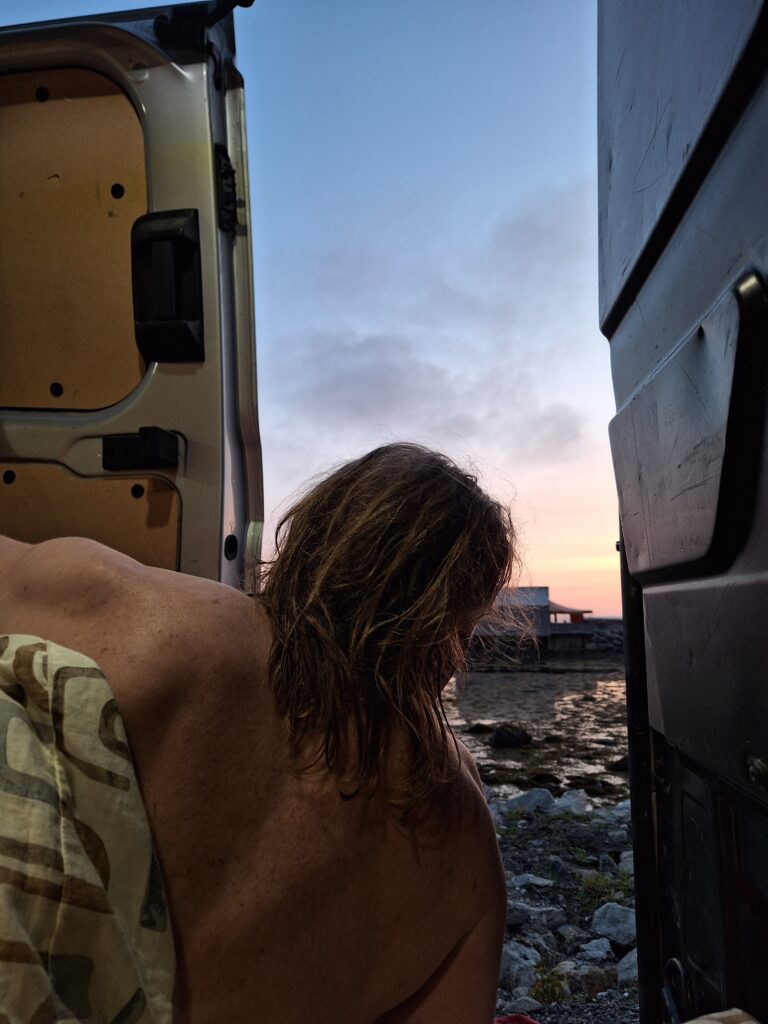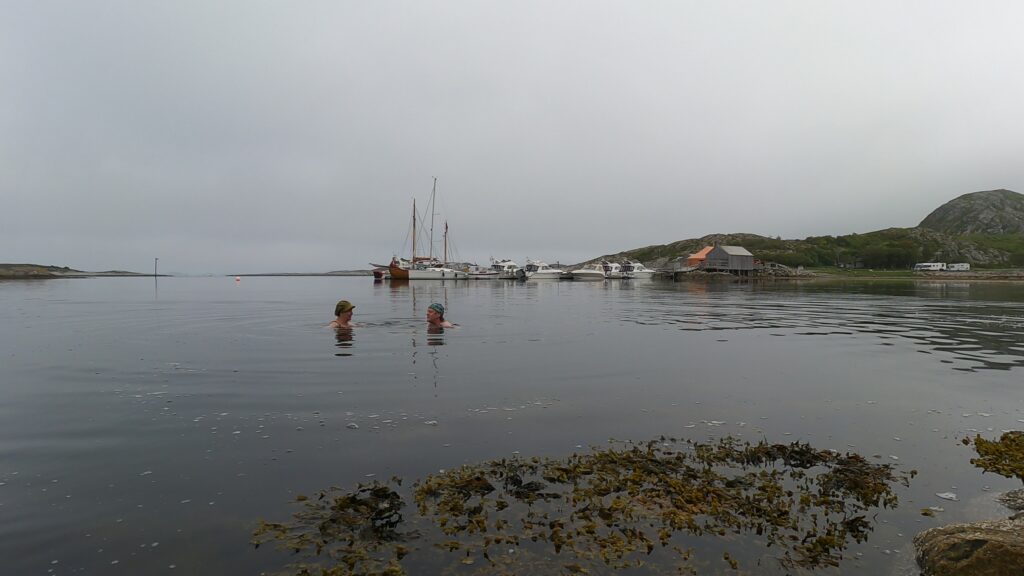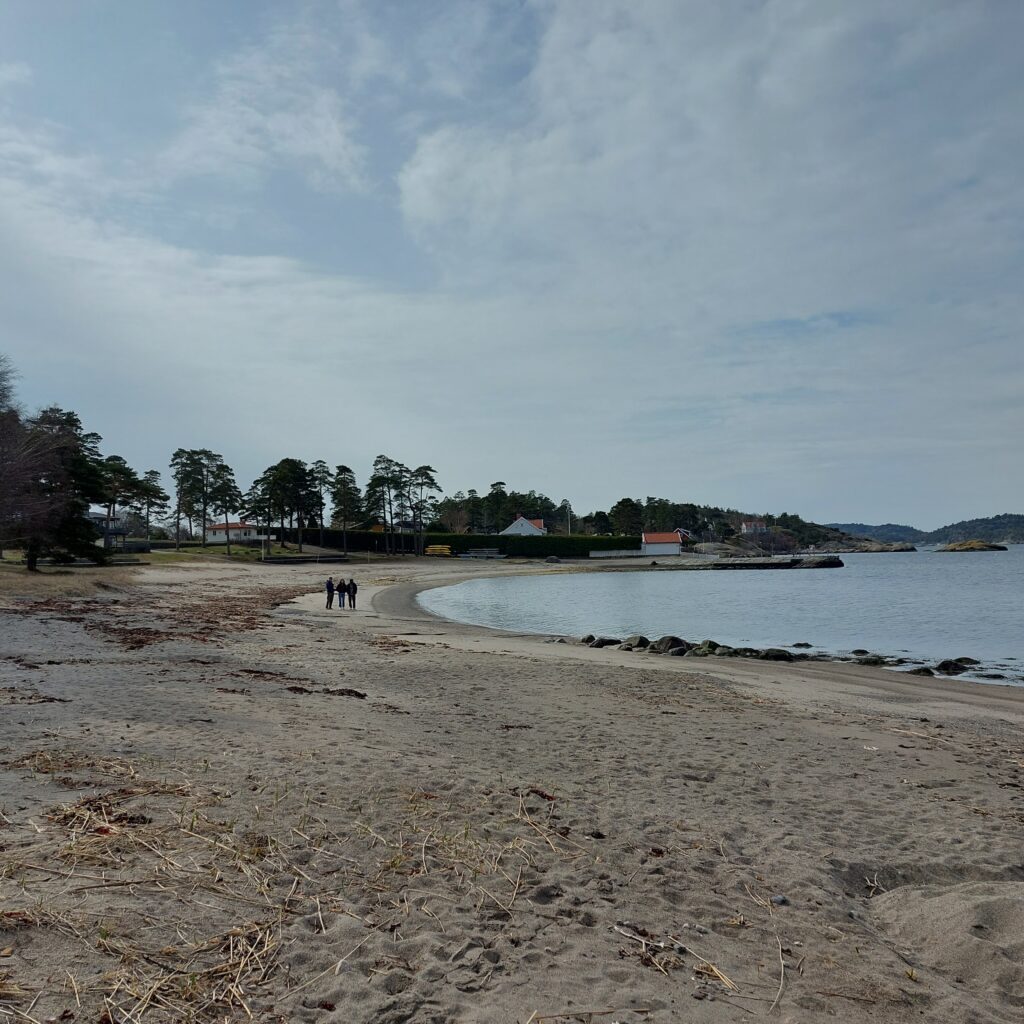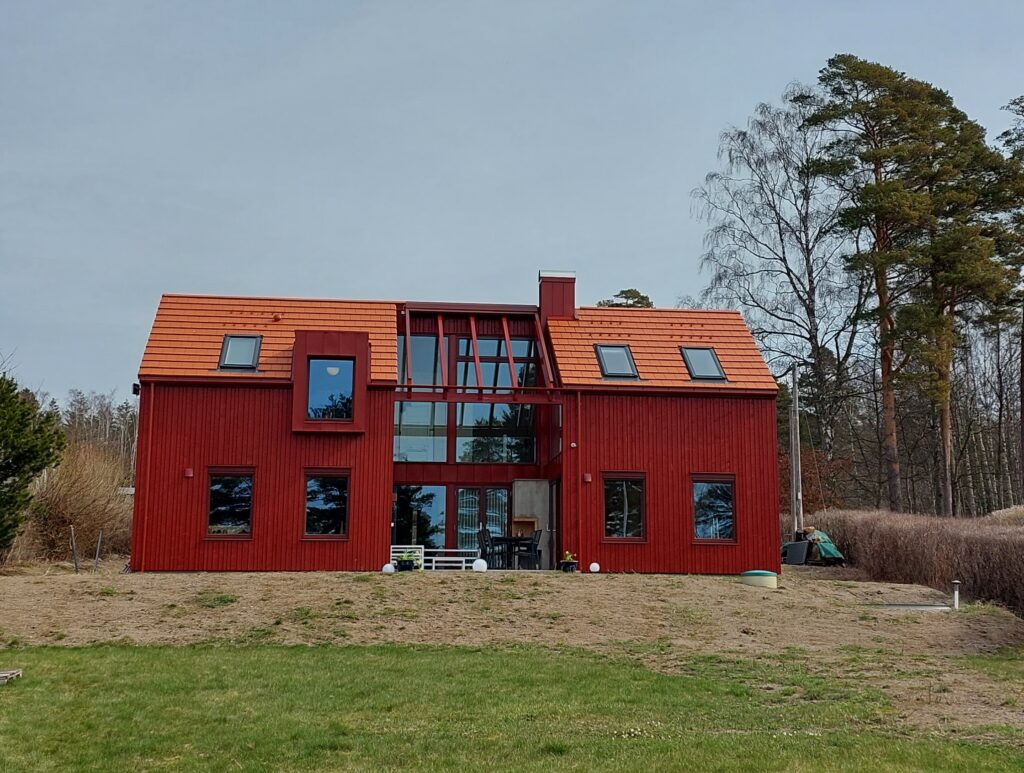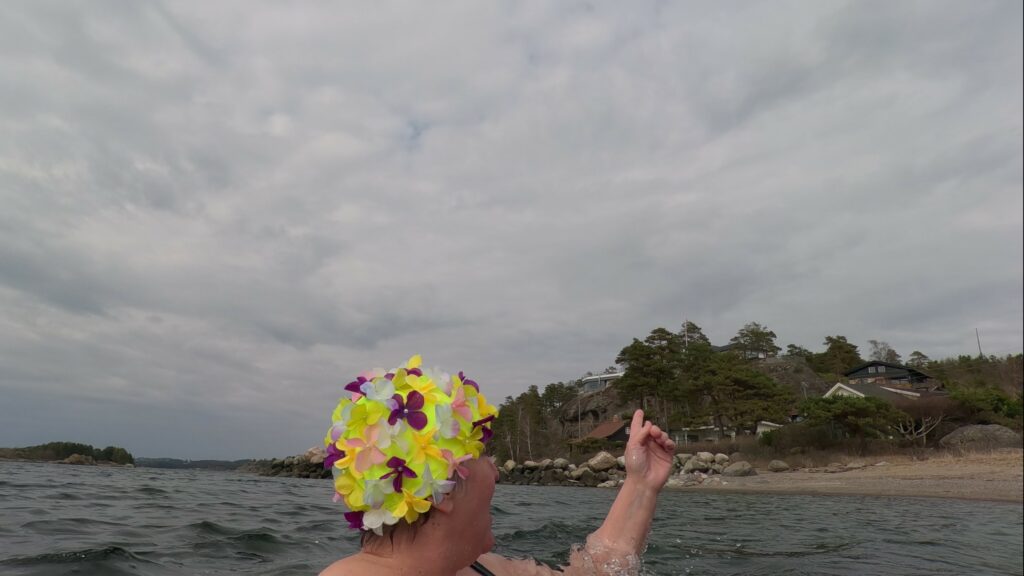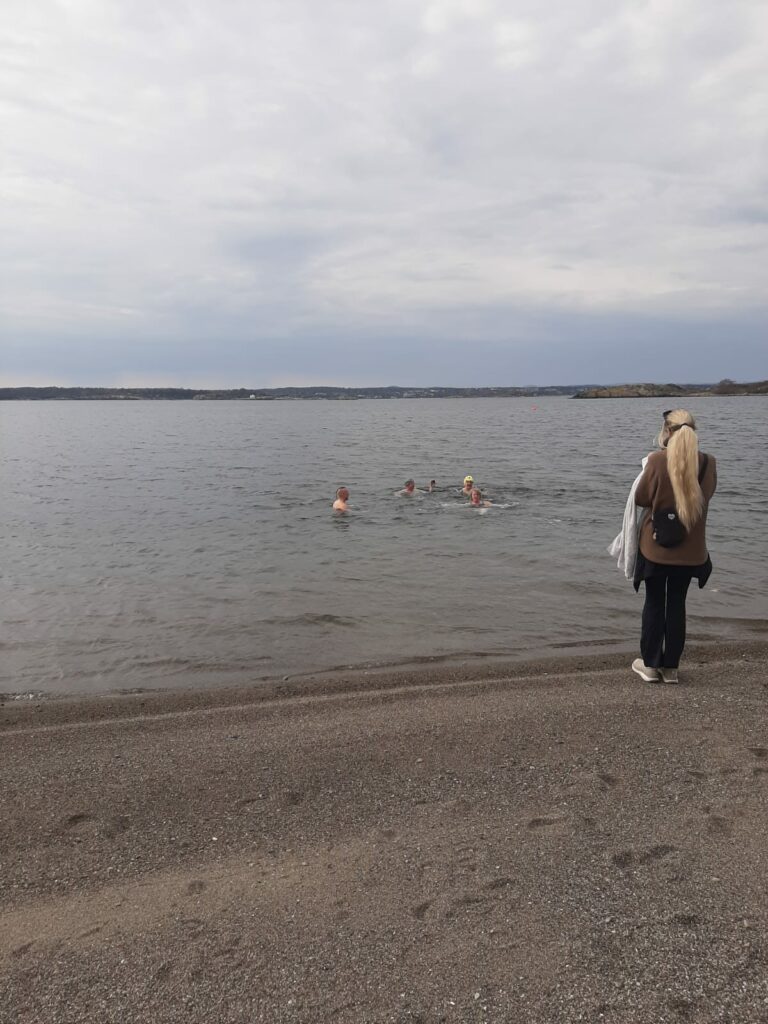When the glaciers disappeared after the Ice Age, large blocks of ice remained here and there. Some of these were covered by sand or gravel, and therefore melted down quite slowly. The result was so-called dead ice pits, or pot hole formations, which filled with water became more or less circular lakes or ponds, connected to each other via the groundwater. Kattjønna (The Cat Lake) south of Kvikne was formed in this way.
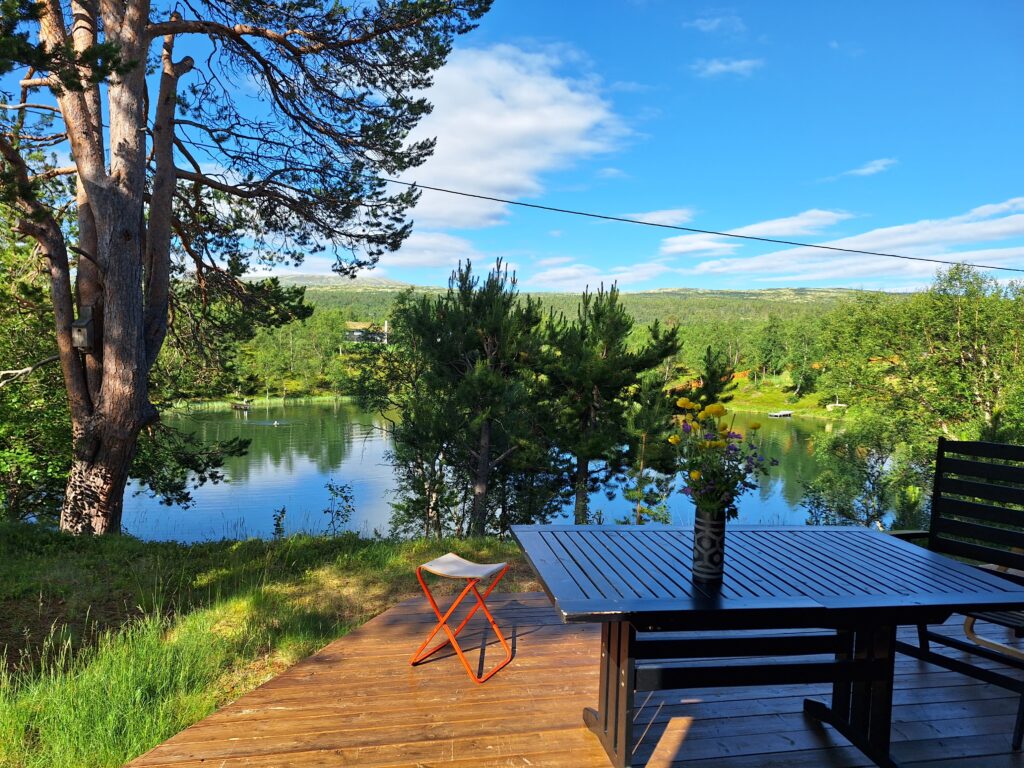
Kattjønna has neither inlet nor outlet, the water level depends on the groundwater. But charming, yes indeed! This lake is 4-5 meters deep, it does not freeze 100 % in winter and it is really generously filled with trout. We had a very pleasant stop at Uncle Jon’s in Kvikne, with prawn dinner, quiz and swimming. Kvikne is nice!
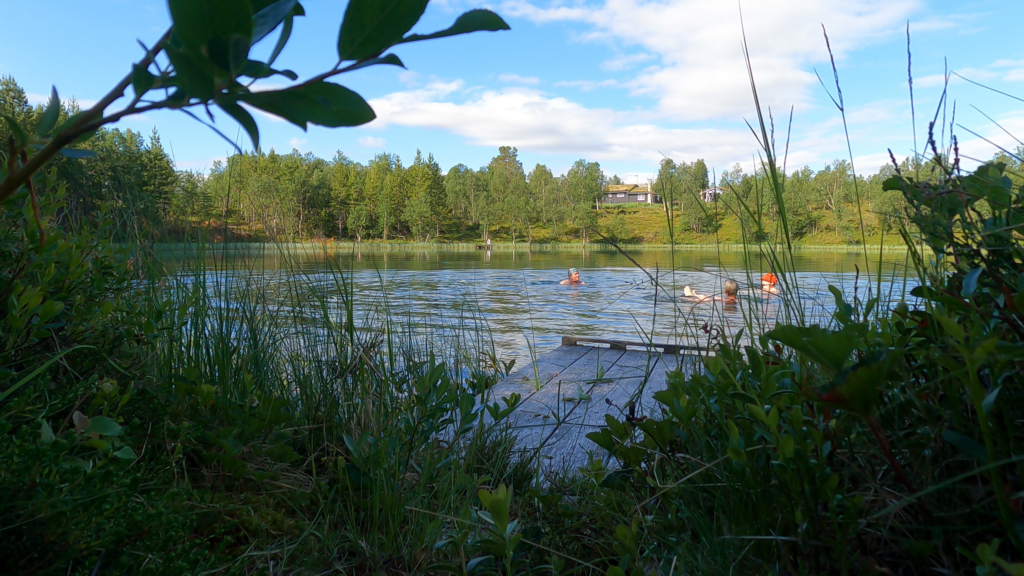
‘A lot of work with the blog!‘ said Kristine, when we asked for a few more photos before the end of the bath.
The goal for the trip was Svarthammerlia and ‘Opera di Sætra 2023‘. The first performance at this mountain farm in Tylldal was in 2010, and it is something we would really recommend. Adventurous experiences in wonderland. This year’s show was based on people and stories from the comic newspaper “Pinchcliff Times’ (‘Flåklypa Tidende‘). What could possibly be better than playing on an old farm?
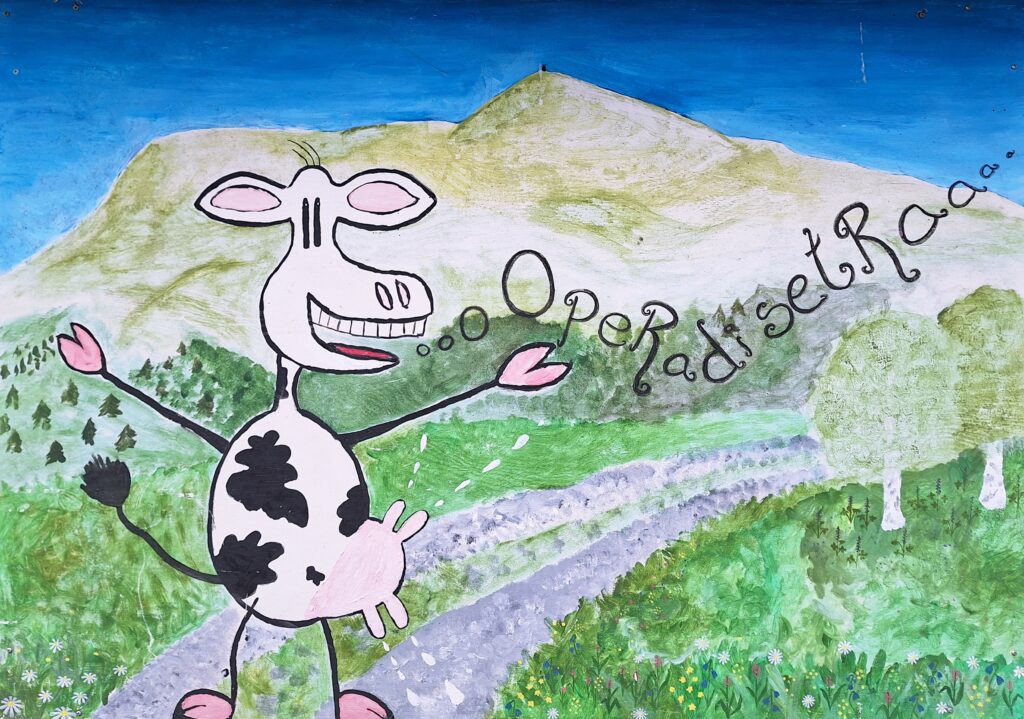
We had booked seats on the bus from Tynset, and it was great fun. The party was ongoing already as we arrived on the bus for the first time, and we were lucky enough to end up in the middle of a bunch of happy ‘Østerdøler’, who kindly guided us during the trip.
On the way up: ‘Here I shot my first moose!‘.
On the way down: ‘Here I shot my first moose!‘.
Comment from the sideline: ‘Here too?‘
It was a great show. Everyone, including singers and musicians, were really good. A splendid atmosphere with lots of humour. Especially the guys making ‘moonshine’ were a hit.
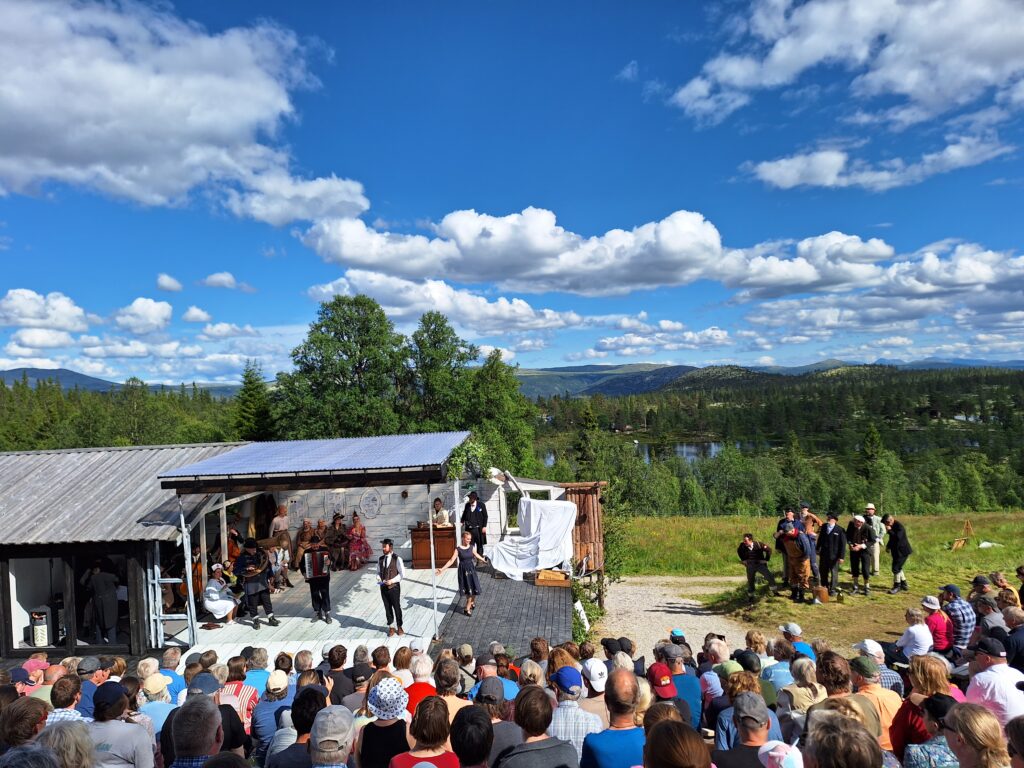
What about swimming, you think? Well, yes, the Svarthammerlitjønna is just right for a bath, but then you actually have to drive yourself. Since we went by bus, we didn’t have time to swim neither before nor after the show. We just had to be satisfied with the breakfast bath at Kvikne. Next time!
